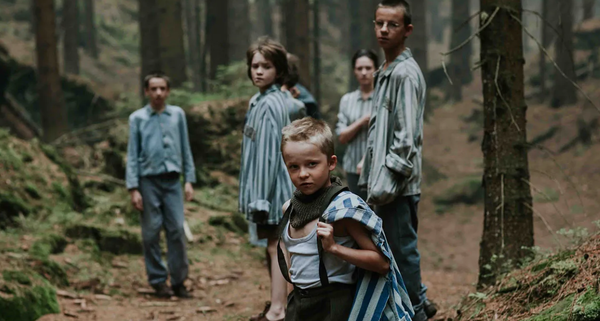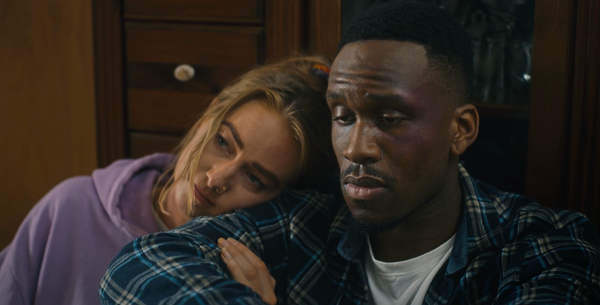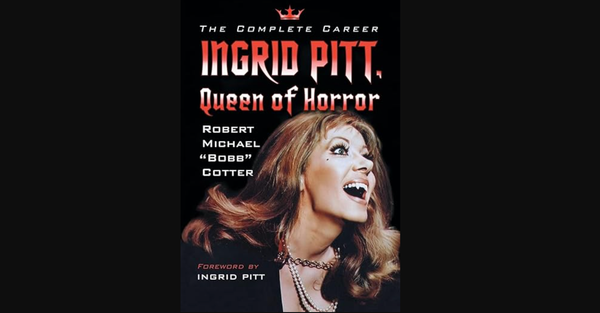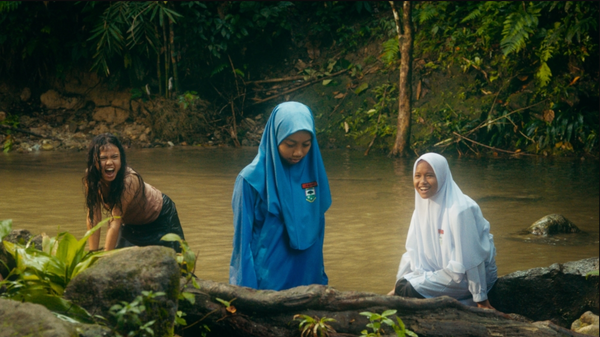Do you feel it? That sudden chill in the air. The crunch of leaves underfoot. A slender breeze, like cold fingers, dancing at the back of your neck. It can only mean one thing. That’s right, it’s Spooky Season! And as the nights draw in and temperatures drop, there’s no better way to get in the ‘spirit’ of things than dimming the lights, getting your comfiest blanket ready to hide behind, and sticking on a darn good horror movie. To quote from the classic Halloween (what else?), “Everyone is entitled to one good scare.” This year, we’d like to help out by giving you 31!
Every day for the month of October, we’ll be adding a new movie to this countdown, and telling you where you can watch it. Rather than giving you titles you’ve likely seen before (you won’t see Freddy, Jason or Jigsaw lurking on this list), we’ll be focusing on hidden gems – under-seen or under-appreciated movies that we feel deserve more attention. We aim to cover all bases: from Folk Horror to Found Footage, Supernatural to Sci-Fi, Werewolves to Witchcraft. And if you like what you see and want more, we’ll be recommending what to watch next!
So get ready for all things creepy, kooky, mysterious and spooky. Maybe even altogether ooky! It’s time for Film Ireland’s 31 Days of Halloween. Dare you watch them alone?
1st October – Red Rooms (2023)
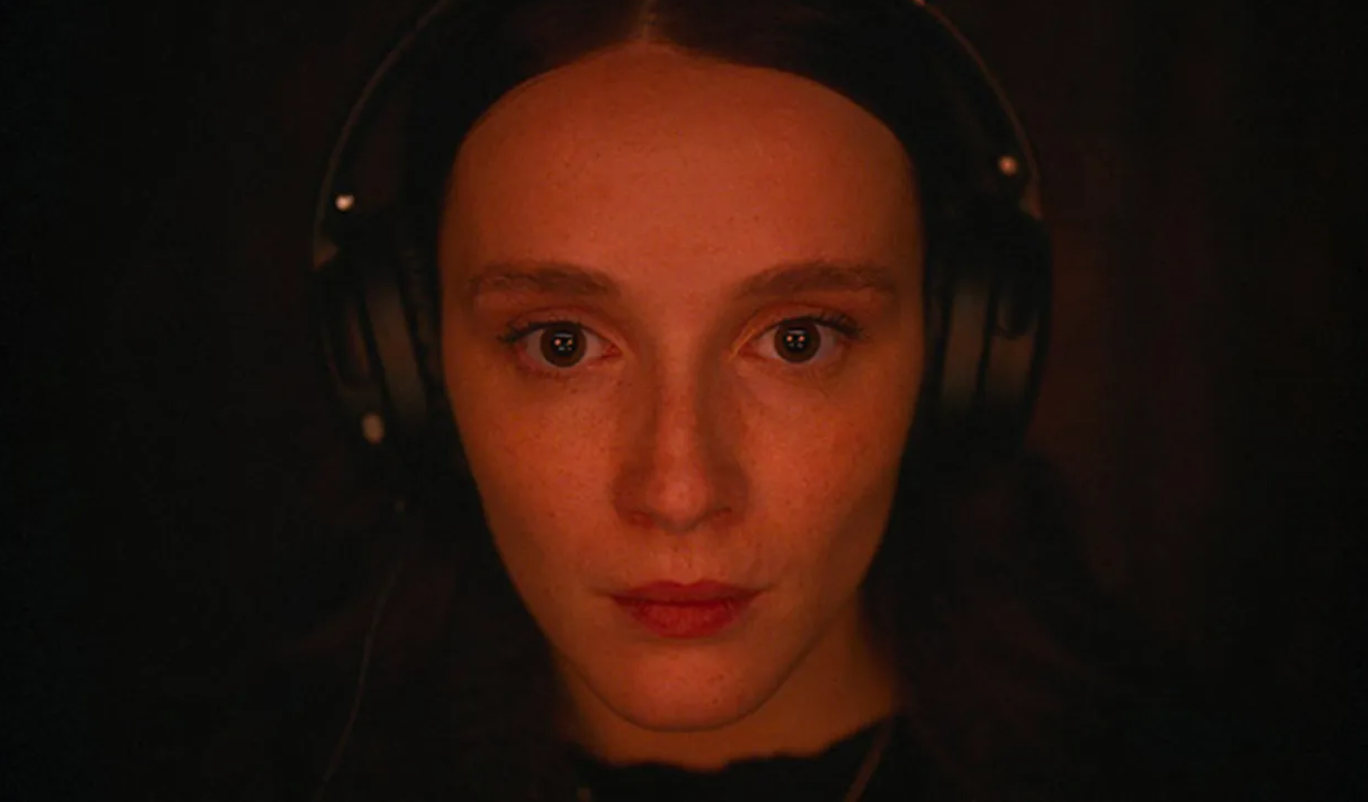
What better way to ease into a month of frights than with a virtually bloodless serial killer entry that still provides enough chills to keep you hooked and spooked? French-Canadian thriller Red Rooms follows Kelly-Anne, a successful fashion model attending the trial of alleged serial killer Ludovic Chevalier. Accused of kidnapping, torturing and murdering three girls, Chevalier’s gruesome acts are streamed live from a “red room” on the dark web.
Writer-director Pascal Plante opts to avoid the explicit gore typical of the genre. The courtroom scenes are hauntingly shot, emphasising sound over visuals, enhancing the discomfort without graphic imagery, while Juliette Gariépy delivers a chilling performance as Kelly-Anne, keeping audiences guessing about her motives for attending the trial to the bitter, shocking end.
Red Rooms offers a profound commentary on our fascination with violence, challenging us to reconsider our own obsessions with true crime. Not sold? You can read the full review by Conor Bryce here.
Red Rooms is available to view on streaming services now, including IFI@Home.
If you liked Red Rooms, check out: Extremely Wicked, Shockingly Evil and Vile (2019), The Snowtown Murders (2011), Frailty (2001).
2nd October – The Monkey (2025)

Speaking of serial killers, last year you most likely caught Indie Horror stalwart Osgood Perkins’ mainstream breakout hit, Longlegs. Utilising guerrilla marketing tactics and a unforgettable performance from a never-creepier Nic Cage, it rattled up a cool $120 million at the box office and ended the year at the top of many a horror fan’s top 10.
However, Perkins’ hotly anticipated 2025 follow-up was mostly met with lukewarm reviews and disappointing box office numbers, quickly slipping off must-see lists in favour of the year’s crowd pleasers Sinners and the sixth Final Destination movie. Which is an crying shame, because The Monkey – VERY loosely based on the Stephen King short story of the same name - is easily the most gruesomely gory fun you’ll have this year.
This is horror with the gloves off. It’s almost as if all the creeping, nervy restraint Perkins put to great use in Longlegs gave him an insatiable need to cut loose with as many shocks, thrills, jump-scares, and - yes - laugh-out-loud moments he could dare cram into The Monkey’s zippy 98 minute runtime, with the latter’s plot as slight as the former’s is complex.
Twin boys find - then try to forever hide - a wind-up, drum-playing toy monkey that causes bizarre and random deaths every time its key is turned. 25 years later, the monkey returns. Cue absolute bedlam. The bazillion monkey-induced death sequences easily out-Mousetrap the aforementioned Final Destination series in terms of inventiveness. A who’s who of character actors, including Theo James, Adam Scott, Tatiana Maslany and a scene-stealing turn from Elijah Wood, deliver endlessly quotable lines with the deadpan oddness that wouldn’t be out of place in a Coen Brothers’ movie. And Perkins’ eschewing of explanation as we white-knuckle along plays gleefully at odds in the current era of ‘Elevated Horror’, where everything often happens for a reason.
It’s probably no surprise that a gifted artist like Perkins, who tragically lost his mother in the 9/11 World Trade Centre attack, chooses to laugh in the face of random cruelty, perhaps as a way of working through his trauma. It’s also no surprise that Mr King himself - one of Horror’s oldest punks - praised the film, describing it as "batshit insane", even though it took huge liberties with his story.
Their sketchy collaboration is our gain. Introduce a little anarchy this Halloween. Wind up The Monkey and strap yourself in.
The Monkey is available to view on many streaming services now, including Amazon Prime.
If you liked The Monkey, check out: Humanist Vampire Seeking Consenting Suicidal Person (2023), Renfield (2023), Triangle of Sadness (2022, not a horror, but equally as laugh-out-loud shocking!).
3rd October – Hell House LLC (2015)

The Monkey’s famed author sure knows a thing or two about creepy clowns, with IT’s Pennywise doubtlessly topping the long list of scary circus dwellers. But in 2015 there emerged a cadre of new challengers, haunting the dimly-lit halls of the first in our Found Footage Friday series. Got a touch of coulrophobia? Tough break, because Hell House LLC’s inhabitants are about to ruin your night.
The Found Footage subgenre has been running rampant since The Blair Witch Project took an idea made flesh by the likes of 1980’s Cannibal Holocaust, and soared with it. Due to the inexpensive nature of shooting in a few locations with handheld cameras and a small crew, you can’t throw a rock these days without hitting yet another limp Witch clone. But writer/director Steven Cognetti’s Hell House franchise - while still relatively unknown to mainstream audiences - has gained a solid cult following for good reason.
Followed by three sequels, a ‘traditional’ fifth entry and an upcoming series, Hell House LLC is scary as hell, fun as heck, and a great group movie to scream along to. The premise is simple and solid - 5 years after a group of young creatives buy the abandoned Abbadon Hotel with plans to make it into a haunted house (or ‘Haunt’, as the kids call them), a documentary crew tries to determine why they mysteriously vanished. Thankfully for them - and us - the Hell House crew filmed the whole project. We soon discover the hotel’s dark history, and why some doors are better left closed.
While not aiming to reinvent the wheel, Hell House LLC excels where many of its peers fall short. Its characters are likeable, with great chemistry - both bafflingly rare in the subgenre. They don’t make stupid decisions, and there’s always a solid reason for them to keep filming. Conjuring an atmosphere milkshake-thick with dread, Cognetti ramps up the scares gradually, culminating in an opening night from hell. And yes, the interior of the Abbadon is chock-full of terrifying (but supposedly stationary) mannequins in clown costumes. Supposedly stationary, you say? Why yes, I do say…
The ultimate goal of a Found Footage horror movie is to suck us into its world, to make us feel what we’re watching is real and panning out in real time. Few attempts are as successful as Hell House LLC. Perfect for a Halloween watching party, it deserves to stand shoulder to shoulder with the likes of Blair Witch and Paranormal Activity as one subgenre’s best offerings. Why not go all out - watch it in the early evening then chase it with a visit to a real Haunt. Tis the season, after all.
Hell House LLC is free to watch (with ads) at Plex, and on many streaming services including Shudder.
If you liked Hell House LLC, you’ll love: Apollo 18 (2011), Chronicle (2012), Grave Encounters (2012).
October 4 – The Outcasts (1982)
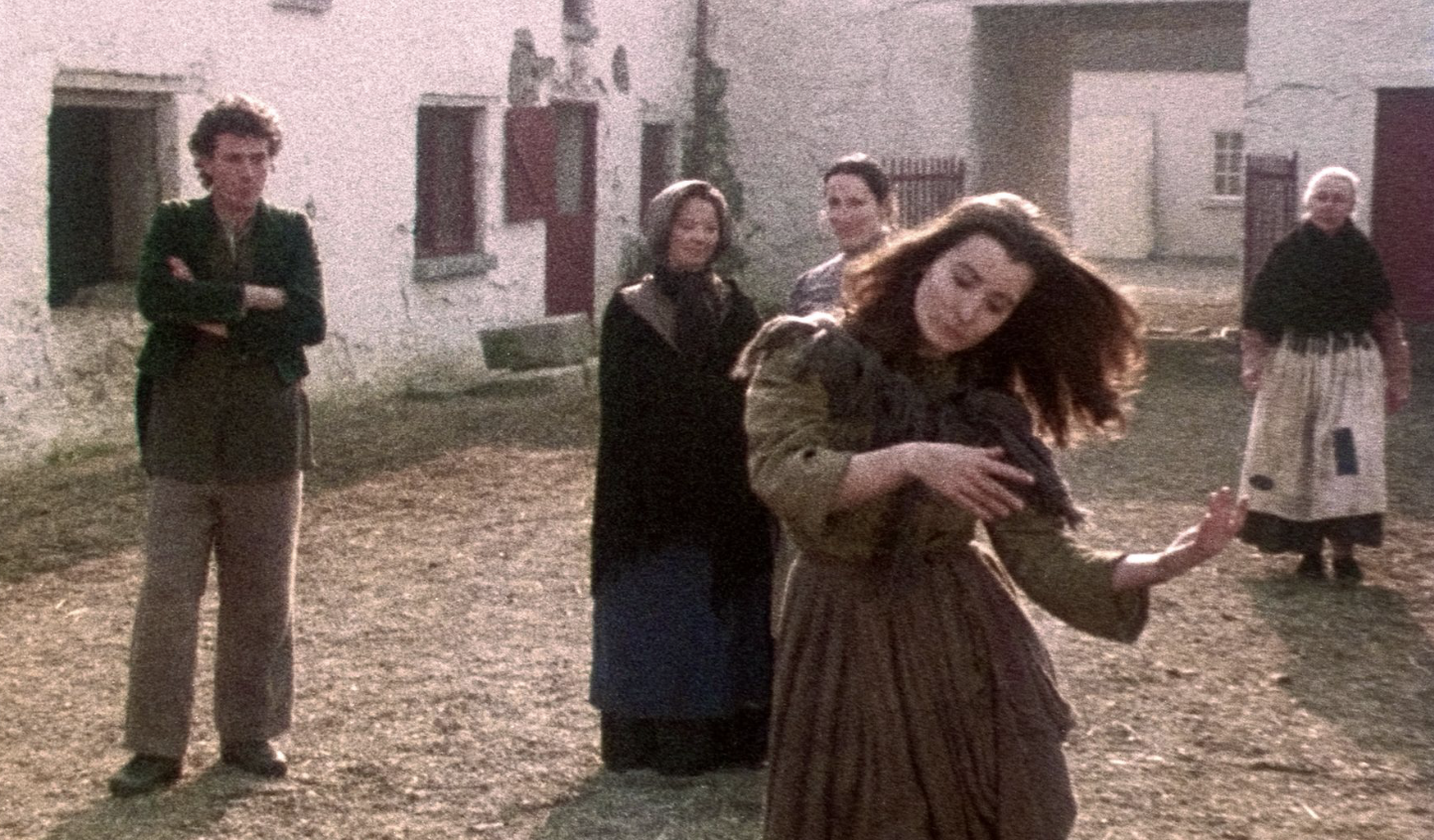
From one underseen cult classic to another, this surreal little oddity was stuck in VHS purgatory until a recent restoration project thankfully gave it the 2K treatment.
One of the earliest pictures supported by the Irish Film Board (now Screen Ireland), The Outcasts is a lost classic of Folk Horror. Tackling suspicion, magic and madness in pre-Famine Ireland, watching it feels like uncovering a strange, powerful relic, an incantation recited around a crackling fire. We follow ‘crazy’ (free thinking) young Maura, ostracised as a witch by her village for Having Opinions and parlaying with Scarf Michael, a shaman, fiddle player and local bogeyman (quite the resumé). As Michael opens her eyes, Maura learns that weaponising what people think of you is the most effective way to ensure your freedom.
The Outcasts is an instruction manual on how to cultivate the roots of Irish spiritualism into something lush and unforgettable. In the words of writer-director Robert Wynne-Simmons, “it raids the vast store of folkloric material of which Ireland is guardian, in order to create a new myth in the ancient tradition of storytelling”. A haunting exploration of a free spirit at odds with societal fear, it lingers long after the credits roll. Many a modern Horror made on our little island (and beyond; I’m looking at you, The Witch) owes a debt of thanks to The Outcasts. It deserves its place in the pantheon of significant Irish cinema, and demands you let it weave its spell on you.
For a closer look at what makes The Outcasts so magical, check out Mick Jordan’s review here.
The 2K restoration of The Outcasts is available to rent from the IFI’s collection.
Want some solid Irish Folk Horror inspired by The Outcasts? Check out Fréwaka (2024), An Taibhse (2024) and Oddity (2024).
Listen to our chat with An Taibhse director here and Oddity director here.
October 5 – A Dark Song (2016)
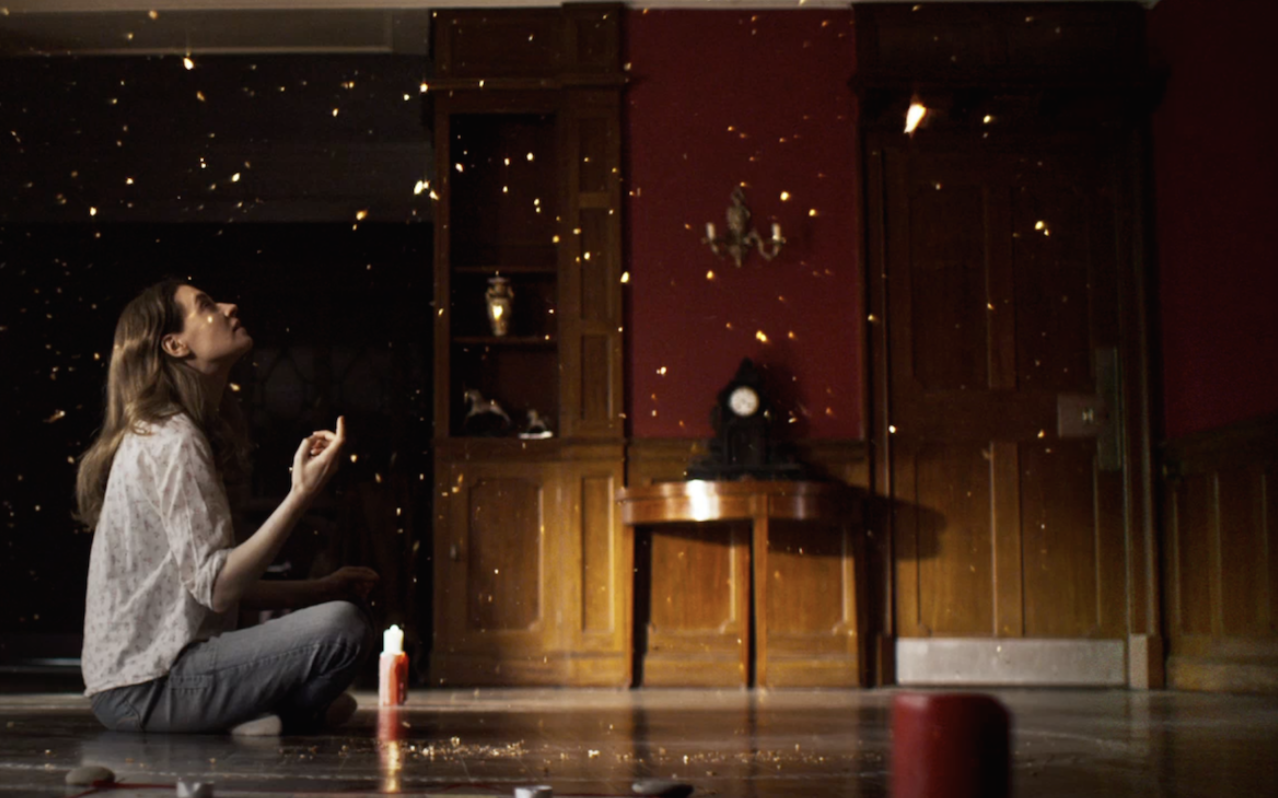
While The Outcasts delivers a fascinating study of one woman’s transformation in the face of social ostracism, similarly complex female characters have been few and far between in the Horror genre. For every Ellen Ripley or Clarice Starling, there’s a hundred Scream Queens getting by with the ability to look terrified and/or look good in a tight t-shirt.
Thankfully the balance has shifted significantly in recent years, with acclaimed hits like The Invisible Man, Barbarian, Bird Box, Midsummar and Saint Maud giving us compelling leads. Beating them to the punch, perhaps even leading the way, is 2016’s Irish-Welsh Occult Horror A Dark Song, with a protagonist every bit as strong as The Outcasts’ Maud.
A brooding exploration of grief and faith, an unflattering, untraditional presentation of magic, A Dark Song is a pressure cooker of tension and unease. Practically a two-person show, it follows Sophia, in mourning after her son's death. Seeking closure, she (naturally) turns to the supernatural, renting a secluded house in rural Wales and recruiting alcoholic occultist Solomon to guide her through a painstaking, months-long ritual. Intended to grant Sophia the resolve she desperately craves, the risk of employing the Uncanny for personal gain is soon laid bare.
Irish director Liam Gavin’s debut doesn’t need to rely on showy effects or excessive jump-scares. The double-act of driven, determined Sophia and volatile, belligerent Solomon is the reason you should hunt it down, their performances an irresistible tête-à-tête, unstoppable force meets toxic dickhead. An ingenious reveal of Sophia’s true intentions delivered later in the game may temporarily flip your allegiance, but for the most part it’s impossible not to urge her on through the increasingly arduous ritual, demanding a denouement to her grief. Catherine Walker plays Sophia with an authenticity that exemplifies how Horror can handle subtle, multifaceted depth, enriching a genre often seen as ‘real’ cinema’s red-headed stepchild. If you’d like some deep introspection before you check under your bed, it’s the perfect slow burn for a cold October night.
Read Sadhbh Ní Bhroin’s take on A Dark Song here.
A Dark Song is free to watch (with ads) at Plex, or on subscription-based sites including Shudder.
For more gripping, thought-provoking explorations of grief check out Bring Her Back (2025), Lamb (2021) and The Nightingale (2018).
October 6 – Werewolf/Wilkolak (2018)
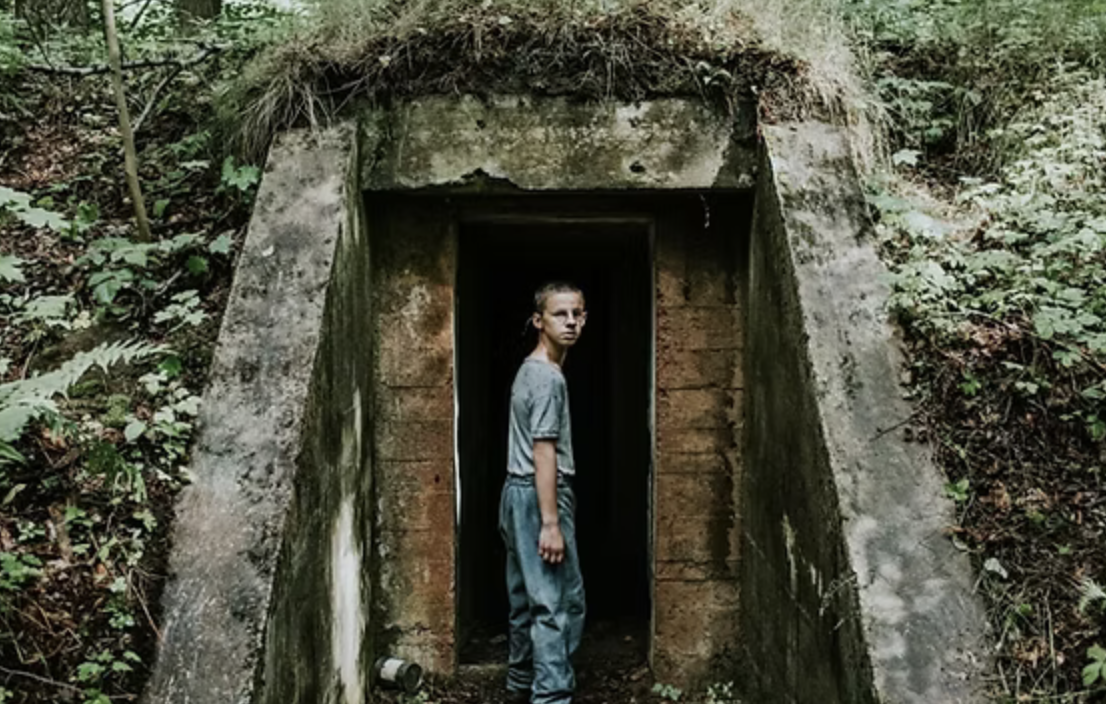
A Dark Song’s tortuous ritual representing the often-painful journey of grief is a case in point - Horror’s use of allegory is rich and long-standing. From Rosemary’s Baby’s masterful commentary on the societal pressures put on women, to Get Out’s commodification of Black bodies as a critique of cultural appropriation, the genre’s platoon of villains is often employed to convey complex themes and messages (alongside rustling the audience’s jimmies with their big scary teeth).
With that in mind, don’t be surprised when you discover 2018’s Werewolf (known as Wilkolak in its native Poland) doesn’t contain actual werewolf. Instead, we’re served with a chilling metaphor for the scars of war, and what primal instincts emerge when human life is stripped to its core.
In the bleak landscape of post-war Poland, Werewolf weaves a tale that juxtaposes the innocence of childhood with the brutality of survival. Set against the backdrop of World War II, a young group of concentration camp survivors find themselves trapped in an abandoned mansion, pursued by the remnants of their past.
This is more than just a survival story; it’s a meditation on the impact of war on childhood, and the enduring damage left behind. What director Adrian Panek has crafted resonates on so many levels, a haunting exploration of the human experience, reminding us of the fragility of innocence in a world marred by violence.
Werewolf stands out as a brutal, unflinching critique of human nature, while conversely celebrating the resilience of human spirit. It tasks audiences to confront the hard truths of history, and will linger long on the mind. It’s more than worth the challenge of an admittedly uncomfortable sit.
Werewolf is available to rent or buy on Apple TV.
Read Gemma Creagh’s fresh take on Werewolf here.
Want more great allegorical Horror? Check out The Killing of a Sacred Deer (2017), A Monster Calls (2016) and The Other Lamb (2019).
October 7 – Silver Bullet (1985)
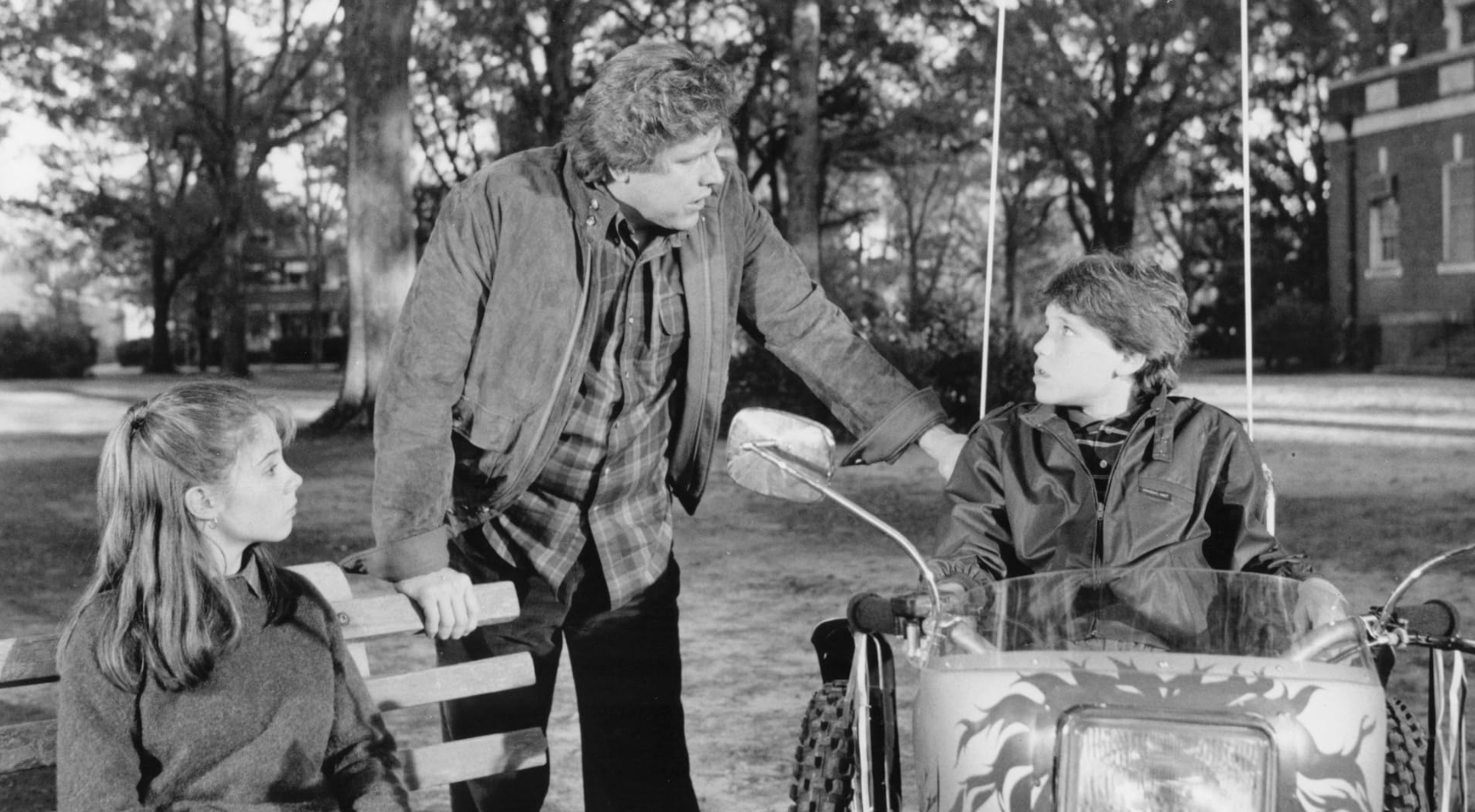
For every gruelling Horror movie that leaves you shook and sorrowful, there’s another offering a fun ride with no baggage to worry about. Silver Bullet is one such movie - and don’t worry, this one’s got an actual lycanthrope! As the first of our contributors to this list, Carmen Bryce is never too old to play The Hardy Boys meet Reverend Werewolf...
Silver Bullet is about as Stephen King as it gets, which is no surprise since he wrote the screenplay himself. Based on his novella Cycle of the Werewolf, King took all his favourite tropes, threw them in a blender, and hit ‘full moon’. It has all the classic ingredients of the horror author – a coming-of-age story set in a sleepy smalltown with quirky locals and a sinister force lurking beneath the surface. It’s a monster flick wrapped in a cosy flannel blanket of King-isms that haunted the dreams of 80s kids everywhere.
Tarker’s Mills was your classic nothing-ever-happens kind of town until one night, people started getting ripped to shreds. As bodies pile up, the locals assume there’s a madman on the loose. Everyone except Marty, a plucky kid in a wheelchair, played by a baby-faced Corey Haim. He’s not buying the ‘madman’ theory but is dead sure it’s a werewolf terrorising his neighbourhood. So, with help from his teen angsty sister Jane (Megan Follows) and their trainwreck of an uncle, played in gloriously unhinged fashion by Gary Busey, they set out to hunt the beast that’s turning their sleepy town into a bloodbath.
Silver Bullet remains the only feature film ever directed by primetime TV veteran Daniel Attias, and part of its charm lies in its nostalgic made-for-TV feel. That said, with heavyweights like The Sopranos and The Wire under his belt, Attias builds tension with expertise and delivers some genuinely chilling moments that land with real weight. When the horror hits, it hits hard. The attacks unfold with brief flashes of movement, shadows slipping past the camera, unearthly sounds from low lying fog, glimpses of a claw, all just out of clear sight. This could be partly down to the fact that Attias hated the werewolf makeup created by Carlo Rambaldi (Aliens, E.T.) and kept it off the screens as much as possible. There are times when the horror is delivered with blunt force, in the crescendo dream sequence for one, where Rambaldi’s make up effects deliver like a hairy feral fever dream.
Before screenwriter Don Coscarelli handed the film over to King, one of his key contributions was the clear nod to the slow-burn dread of Spielberg’s 1975 classic Jaws. There are several unmistakable parallels: the opening kill by an unseen force, the shocking death of a child, and a grief-stricken parent triggering a hunting party (complete with a pivotal emotional confrontation).
Silver Bullet isn’t a masterpiece, it’s not the best Stephen King adaptation, and it’s far from the greatest werewolf film ever made. But there’s a reason it’s endured. It’s a cult classic with a scrappy charm; the kind of film that sticks with you like the memory of a childhood ghost train ride – undeniably cheesy but still capable of giving you a good scare when the lights go out.
Silver Bullet is available to buy from Amazon, and free to watch on YouTube.
For more thrill-ride Horror, check out Sinners (2024), Abigail (2024) and Jaws (1975).
October 8 – The Company of Wolves (1984)
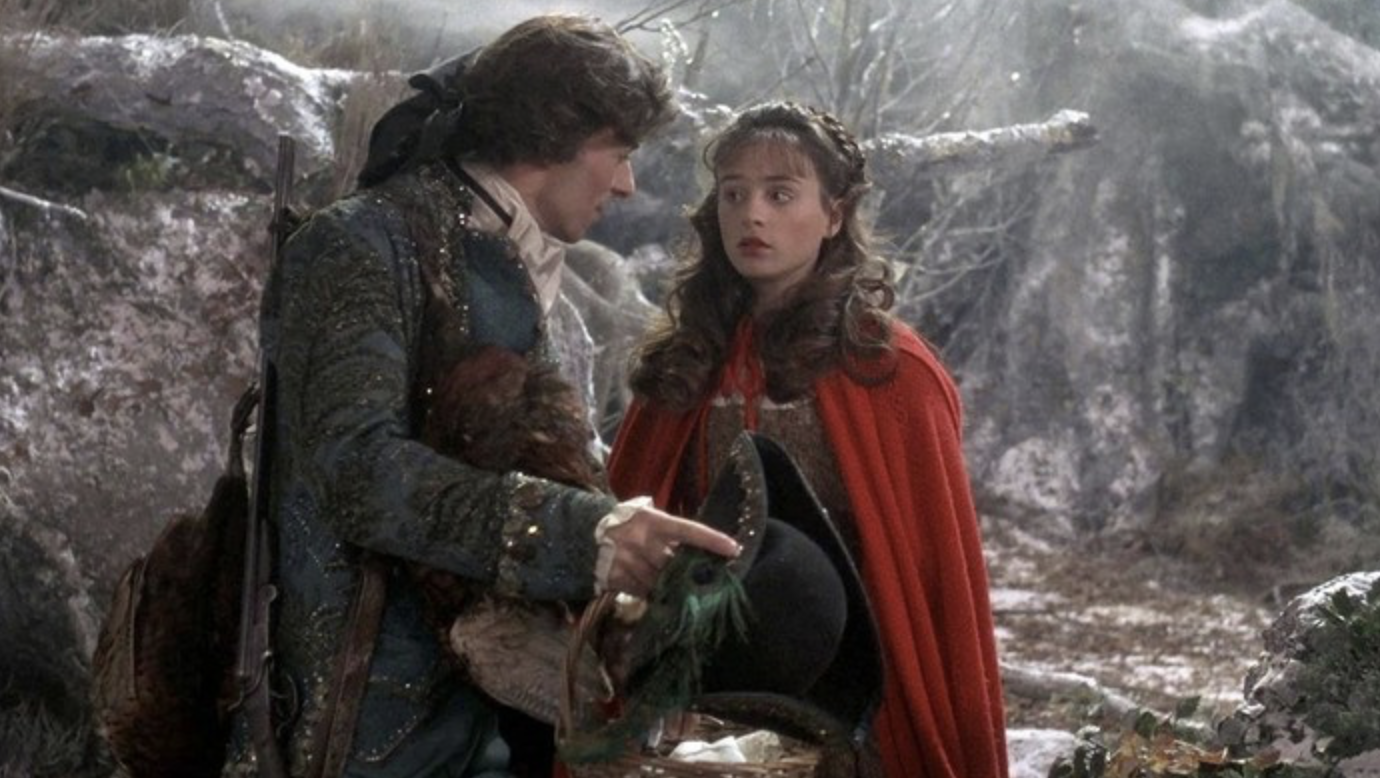
You guessed it…more silver-dodging, moon-loving antics with today’s pick. But this one is a wolf of a different colour, likely a deep and sensuous burgundy compared to Silver Bullet’s camp, Dayglo red.
The story goes that Ireland’s own Neil Jordan, in the infancy of a career that would eventually bring us cracking genre fare like Interview with the Vampire and Byzantium, met writer Angela Carter at a conference in Dublin. A novelist himself, Jordan was thrilled to discover Carter had a 12-page script at hand, based on a short story from her anthology The Bloody Chamber. Jordan suggested a collaboration, building up the slight script to include more stories and elements from the same collection; a surreal reimagining of classic children’s stories woven through a modern feminist lens. The result of marrying his love of dreamlike, genre-bending fantasy with her darkly erotic subversion of the traditional was The Company of Wolves, easily one of the greatest blends of fairy tale and horror.
A literal fever dream of a movie, intricately weaving the threads of childhood innocence and the lurking dangers of adulthood, The Company of Wolves still feels strange and dangerous today. Strange, like a walk in the woods under a midday sun at midnight. Dangerous, like meeting the human embodiment of every Big Bad Wolf, and realising he was actually pretty hot.
The story begins in reality, but quickly enter the dreams of Rosaleen, a girl on the cusp of womanhood. As she navigates a realm populated by wolves, both real and metaphorical, we witness her transformation from innocence to awareness. Vivid imagery clashes with stark horror elements, creating a rich tapestry. Rosaleen’s mind skips from fable to fable - a young groom disappears on the night of his wedding, only to return years later with a dreadful secret. A boy meets the devil in the woods and enters into a Faustian bargain. The scorned lover of a rich nobleman turns up pregnant at this wedding, a cursed enchantment waiting on her lips. A lost, hunted she-wolf is offered solace by a kindly old priest. No fairytale is safe - Little Red Riding Hood, Sleeping Beauty, Beauty and the Beast, Snow White…all are skewered, revealing deeper societal truths about gender roles, sexuality, and the treachery hidden beneath the surface of the traditional.
Jordan crafts a visually stunning experience that lingers in the mind long after viewing. Each frame is a painting, meticulously composed to evoke both beauty and dread. Colour plays a huge part, shifting from vibrant hues in moments of innocence to shadowy tones symbolising the encroaching darkness of adult realities. A haunting score by George Fenton echoes the film’s themes, oscillating between whimsical melodies and disquieting undercurrents, reinforcing the film's roots while simultaneously grounding it in a more sinister reality, creating a soundscape that resonates on a visceral level. ‘The Story of the Bride and Groom’, in particular, is an absolute earworm,
The Company of Wolves’ cultural impact is profound, and still as relevant today as it was in 1984. It invites audiences to reconsider the centuries-old narratives that have shaped their understanding of gender and power dynamics. This haunted fairytale is a reminder that the monsters we fear are often reflections of our own desires. As a cinematic experience, it is as rewarding as it is unsettling, ensuring its place as a cult classic; an exploration of identity, sexuality, empowerment, and the dangers that lurk behind an innocent request for a chaste kiss.
The Company of Wolves is free to watch on YouTube.
For more beautiful dark twisted fantasies, check out The Shape of Water (2017), Frankenstein (2025) and The Lighthouse (2019).
October 9 – The Shrouds (2024)
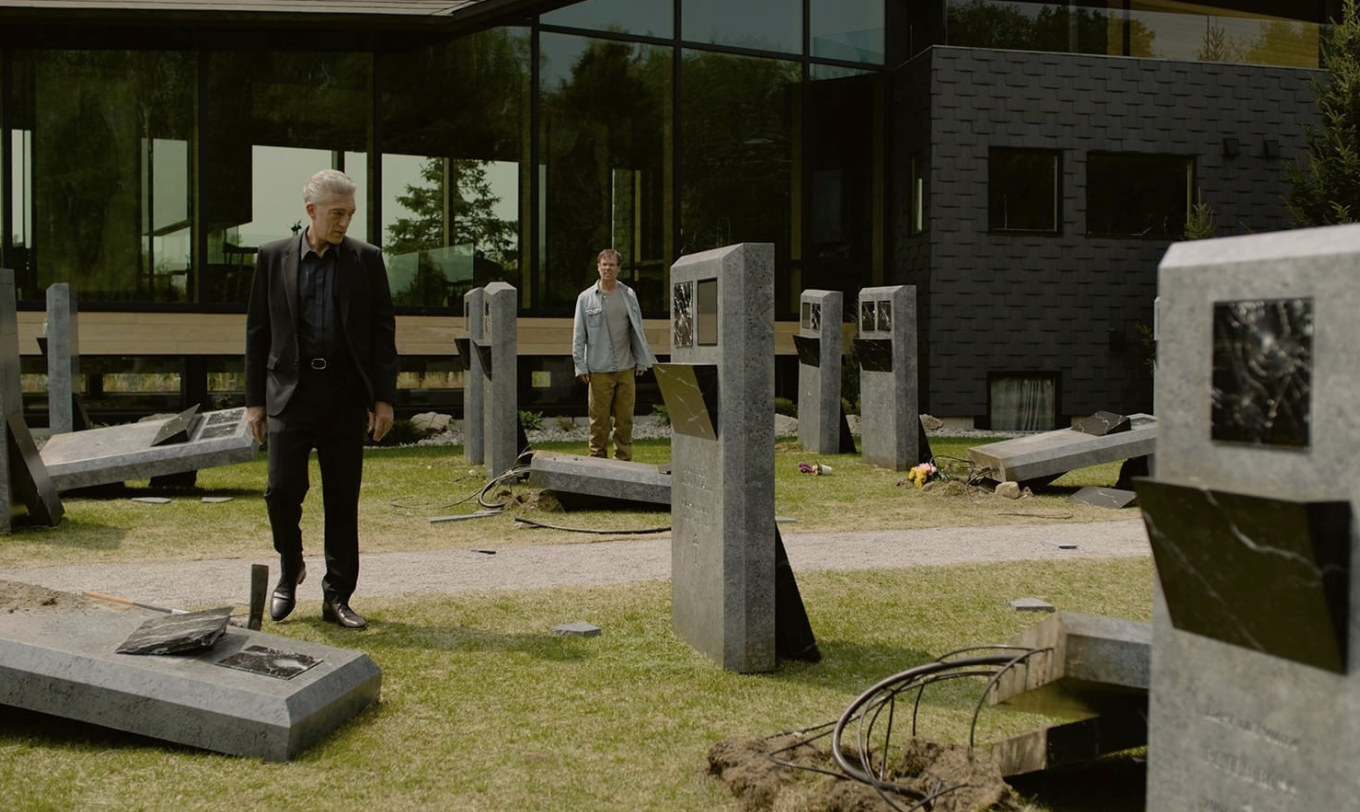
Moving from one legendary director to another, David Cronenberg's The Shrouds provocatively explores technology and the human condition, blending his signature Body Horror style with a brooding, introspective narrative.
Set against a backdrop of a cold, dystopian Toronto, the film revolves around Karsh, the CEO of GraveTech. The company makes technology that allows mourners to view a live feed of their departed loved one’s decaying corpse via a screen on their gravestone, all made possible by the titular shrouds; strange garments embedded with cameras. When some of the graves (including that of his own wife Becca) are mysteriously vandalised, Karsh attempts to get to the heart of the crime with the help of Becca’s twin sister and her ex-husband Maury. Meanwhile, Karsh is also experiencing disturbing, erotic dreams where his wife appears, increasingly mutilated.
From the outset, The Shrouds will haunt you. Cronenberg invites us to confront uncomfortable truths about existence, mortality, and the intersections of technology and humanity. It stands as a testament to his unwavering commitment to exploring the darker facets of life, challenging the societal norms surrounding grief and healing, pushing us to reconsider our own perceptions of loss.
The Shrouds demands engagement and introspection. Its rich visuals, coupled with strong performances and a weighty thematic core, create a complex, compelling world. Not just an exploration of grief but a profound meditation on the very essence of being human in an increasingly complex world, it will wiggle under your skin and stay there for days.
Read Olivia O'Ríada’s deep dive into The Shrouds here.
The Shrouds is available to rent on IFI@Home.
For more stylish, dystopian Horror check out The Watched (2024), Double Blind (2023) and Vivarium (2019).
Listen to these chats we've had with Double Blind director and Vivarium writer and director.
October 10 – Lake Mungo (2008)

From Frankenstein to Ghost to, yes, The Shrouds, how we deal with the death of a loved one is an often-used theme in Horror. Another such movie, this week’s haunting and heartbreaking pick for Found Footage Friday, uses unimaginable loss as a catalyst for discovery. Sarah Cullen takes a moonlit trip to Lake Mungo…
It doesn’t feel quite right calling Lake Mungo a mockumentary; there are no winks to the camera here. Recounting the story of the Palmer family, haunted by their daughter following her tragic drowning, Australian director Joel Anderson employs talking heads, found footage and location shots that are indistinguishable from a non-mock documentary (well, outside the possibility of true paranormal event). The result is a rich and vibrant world, holding dark secret at its heart.
Perhaps it would be more accurate to say many dark secrets, as Lake Mungo grows more complex as more of the Palmer’s story is revealed. It begins with the revelation that daughter Alice (Talia Zucker) is haunting their home. When her likeness is discovered in photographs and films recorded by her brother Matthew (Martin Sharpe), the narrative grows more complex as we learn more about her grieving family’s growing dysfunctions, and Alice’s own hidden life. Was Alice herself haunted before she died? Did she know about the tragedy that was coming for her?
All the way down to the flat establishing camera shots and grainy news footage, Lake Mungo is one of the most authentic looking and feeling fictional documentaries around. Like its spiritual predecessor, Picnic at Hanging Rock, the sun-drenched Australian scenery blinds us from the secrets hiding in the shadows. The actors are uniformly fantastic, each conveying the layers of grief, confusion, and at times dishonesty needed to create complex three-dimensional characters who could easily populate our own world. Even the twists and sudden narrative reveals – which would typically prove frustrating, indicating that the film-makers were intentionally trying to mislead the viewer – make perfect sense in the context of a sensationalist documentary crew, interested predominantly in keeping the viewer’s attention.
Many of the film’s most disturbing moments come from a careful juxtaposition of still images from photos or video feeds, a slowly panning camera, and a droning soundscape which mimics the electronic interference of the recording equipment. However, for me, one of the most haunting scenes is Alice’s father Russell (David Pledger) simply talking to the camera, recounting his own paranormal encounter with his daughter. Here we see how Lake Mungo is a ghost story in the most stripped back, purest sense: the story of a dead girl, the story of a family desperately trying to find closure from their grief.
As alluded to above, Lake Mungo has the additional layer of its in-universe film-makers, who have put together this 90-minute documentary for reasons unknown. Are they believers in the paranormal? Are they cynically profiting off the grief of a vulnerable family, or even working as PR for a family that have themselves been accused of garnering public attention from their daughter’s death?
Any and all of these readings are possible. Regardless of the conclusions you come to, Lake Mungo remains a haunting rumination on the nothingness that follows the death of a loved one.
Lake Mungo is available to watch on Prime.
For three more creative explorations of love and loss, watch A Ghost Story, (2017), Fréwaka (2024) and Pet Sematary (2019).
October 11 – Underwater (2020)
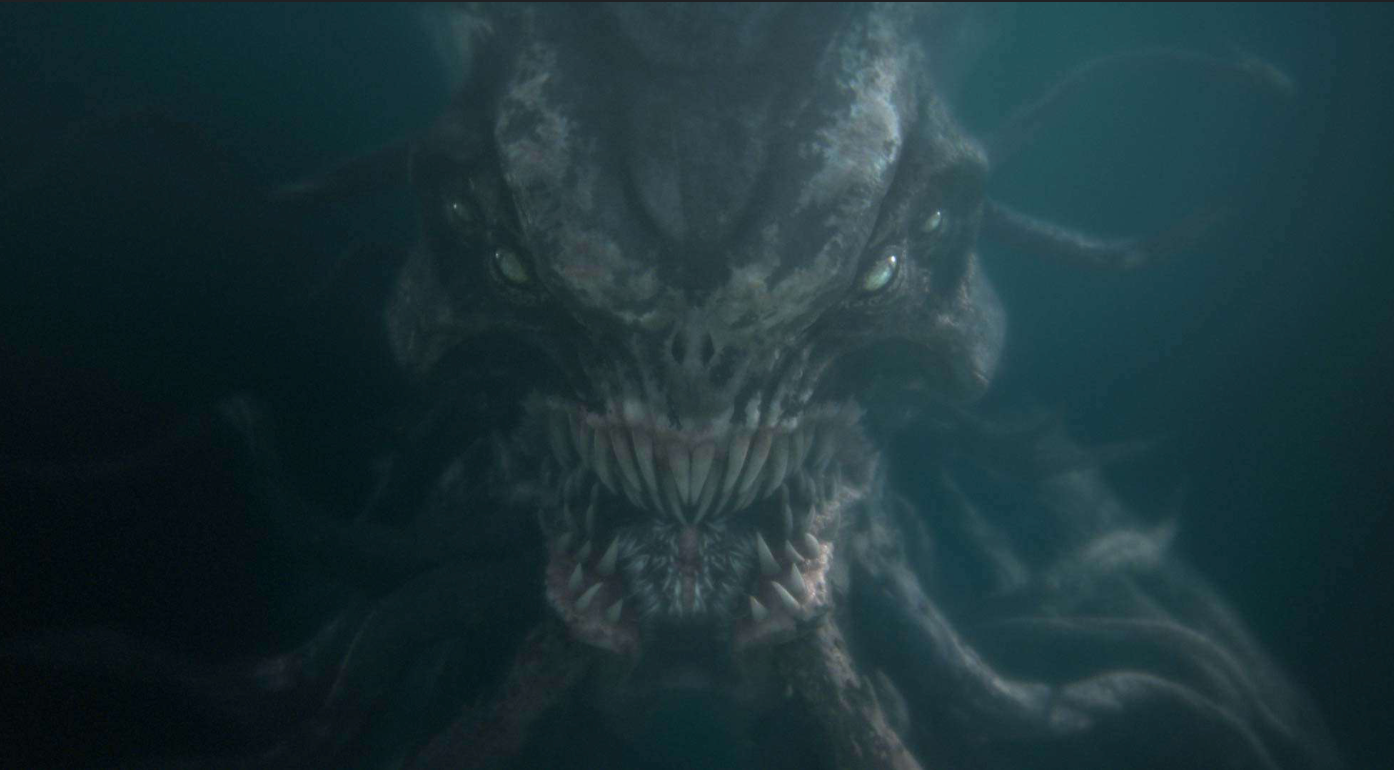
From a horror at water’s edge to one set approximately 35,814 feet below it. Sinking without a trace (heyooo) as the box office and dismissed by critics as one of many movies too derivative of Alien to be taken seriously, Underwater is in fact a hidden pearl. A zippy, thrilling Creature Feature, more fun than a barrel of sea-monkeys, it has a cast of character actors (including Vincent Cassel and T.J. Miller) doing great ensemble work, and an unapologetic B-movie soul.
Underwater is set a research facility at the bottom of the Mariana Trench, and starts with an inventive post-credits sequence that moves down, down, down through the murky gloom of the Pacific, giving us a sense of just how deep that is. It then subverts similar disaster fare – typically building exposition and tension slowly - by waiting all of 3 minutes before thrusting us into a catastrophic event that reduces a crew of hundreds to a rag-tag handful of survivors. Reluctantly led by Kristen Stewart’s mechanical engineer Norah, they race to reach a neighbouring facility before they run out of air. If you’ve dutifully followed this list from the start, it’ll be unsurprising to learn that they’re not alone down there. Lurking in the dark waters are creatures straight out of your worst nightmares, and hiding beyond them, in the impossible deep, is a twist in the tentacle that would leave H.P. Lovecraft quaking in his pantaloons.
Underwater boasts - prove me wrong - some of Kristen Stewart’s best work to date. Look beyond the obvious Ripley comparisons (reluctant heroine battles both monsters and corporate negligence in a male-dominated environment) and you’ll find a compelling, confident performance by an actress at the top of her game. Norah is initially all calm stoicism in the face of an insane situation, but Stewart gradually breaks her down, eschewing melodrama and a wobbling lip in favour of subtle tics and nuanced body language, giving this type of movie exactly what it needs - a realistic, relatable lead. If the audience doesn’t care, the movie doesn’t work. It also helps that she’s no stranger to the Horror genre - those huge, expressive eyes had been conveying sheer terror and grim resolve since her breakout in Panic Room.
Giving Underwater an undeniable and unapologetic B-movie aesthetic is just as vital - we’re in on the joke, and along for the ride. Its blend of humour, suspense, icky creatures and accessible storytelling means we can enjoy it for what it is; a simple, thrilling 90-ish minutes, by no means dumb but not requiring a lot of investment. It’s a great rowdy group watch.
Underwater is exactly the kind of movie that makes the Horror genre so enjoyable. While it may not reinvent the wheel, it offers enough jump-scares and aquatic action to make it a fun watch revisited every Halloween when you’re in need of a break from subtext and symbolism. And who doesn’t love some solid sea-faring spookery? From Jaws to Sea Fever, it definitely is better, down where it’s wetter.
Underwater is available to watch on Disney+.
For more thrilling Action Horror check out 28 Years Later (2025), Train to Busan (2016) and Upgrade (2018).
October 12 – Life (2020)
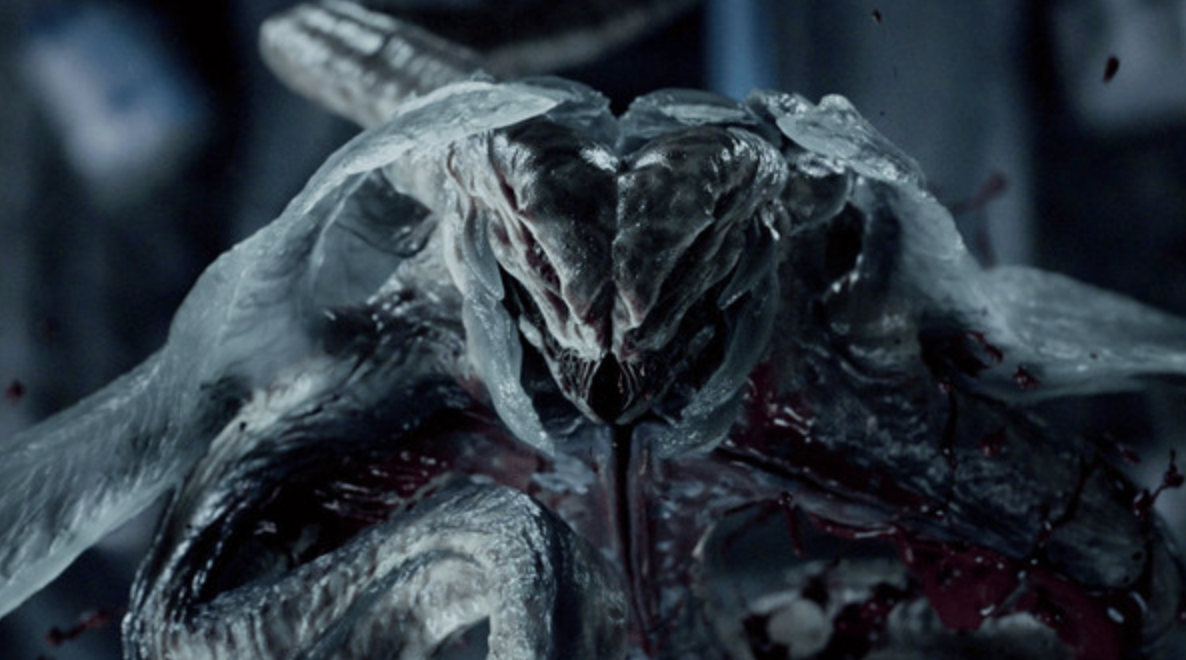
From the vast nothingness below to the one above, Life is another movie that was unfairly dismissed as an Alien clone. Featuring one of the more memorable movie monsters in recent history, it may be indebted to Ridley Scott’s groundbreaking Sci-Fi Horror but there’s enough taut, white-knuckle fun on hand to keep you frightened, thrilled and disgusted throughout. Yuliia Riabova straps in and counts down from 10…9…8…
Take a deep breath now - Daniel Espinosa’s Life launches us into the darkness of space.
Aboard the International Space Station, the crew of six astronauts intercept a delivery from Mars that appears to contain the first-ever evidence of extraterrestrial life. The cute alien receives the name Calvin - and little Calvin is about to become a BIG problem.
A long setup pays off. With broad strokes, it builds the characters’ backstories and personalities, making you actually care about their fate. Sho (Hiroyuki Sanada) becomes a dad, greeting his newborn daughter over a videocall. Hugh (Ariyon Bakare) enjoys zero gravity, finally able to get out of his wheelchair. And David (Jake Gyllenhaal), a former U.S. soldier in Syria, dreads a bare thought of coming back to Earth - which in 2025 feels even more relatable than in 2017, when Life was originally released.
The imaginary “Audience Choice Award” goes to Ryan Reynolds playing Rory - a lovely sarcastic engineer who can easily fix a space shower, but isn’t too keen on sharing the station with their historic discovery. If only scientists ever paid attention to simple human intuition….
Alas, Calvin grows up, breaks out of the lab, and attacks - despite the security protocols of quarantine officer Dr Miranda North (Rebecca Ferguson). Her worst nightmare comes to life (as one would expect considering the genre).
It's hard to overlook the stunning visual aspect of Life. Starting with the opening sequence of the astronauts floating through the ISS - with actors being suspended on wires - it makes you wonder how difficult but also fun it must have been to shoot. Smooth, almost weightless cinematography by Ireland’s own Seamus McGarvey (Atonement) adds nicely to the entire space experience.
And then Calvin itself is a masterpiece. This completely CGI organism seems simply too real: it constantly develops and changes, and expresses itself so vividly with no words at all. He is something you hate to see, yet you can’t stop watching – the digital effects crew at Double Negative made sure of that.
The script by Paul Wernick and Rhett Reese plays an ingenious game of hope with the audience - at each stage of the story, there’s still a fighter’s chance of survival. And as much as you want to shout at the characters at certain times, even when they make terrible life (death) choices, their reasoning is if not rational then at least understandable. The tension grows until the very last second - Life ends at its peak, as fascinating as it is terrifying.
It's ironic how the moral of the story turns out to be “if something goes wrong, maybe it’s best to let it”. If a space probe drifts off-course, why risk your life trying to catch it? If an unknown organism seems dead, maybe don’t zap it back to life? Who knows - give them a finger, and they might take the whole hand.
Read Ruairí Moore's take on Life here.
Life is available to rent or buy from Prime.
Want more screams in space? Check out Alien (1979), Event Horizon(1997) and Apollo 18 (2011).
October 13 - The Ritual (2017)
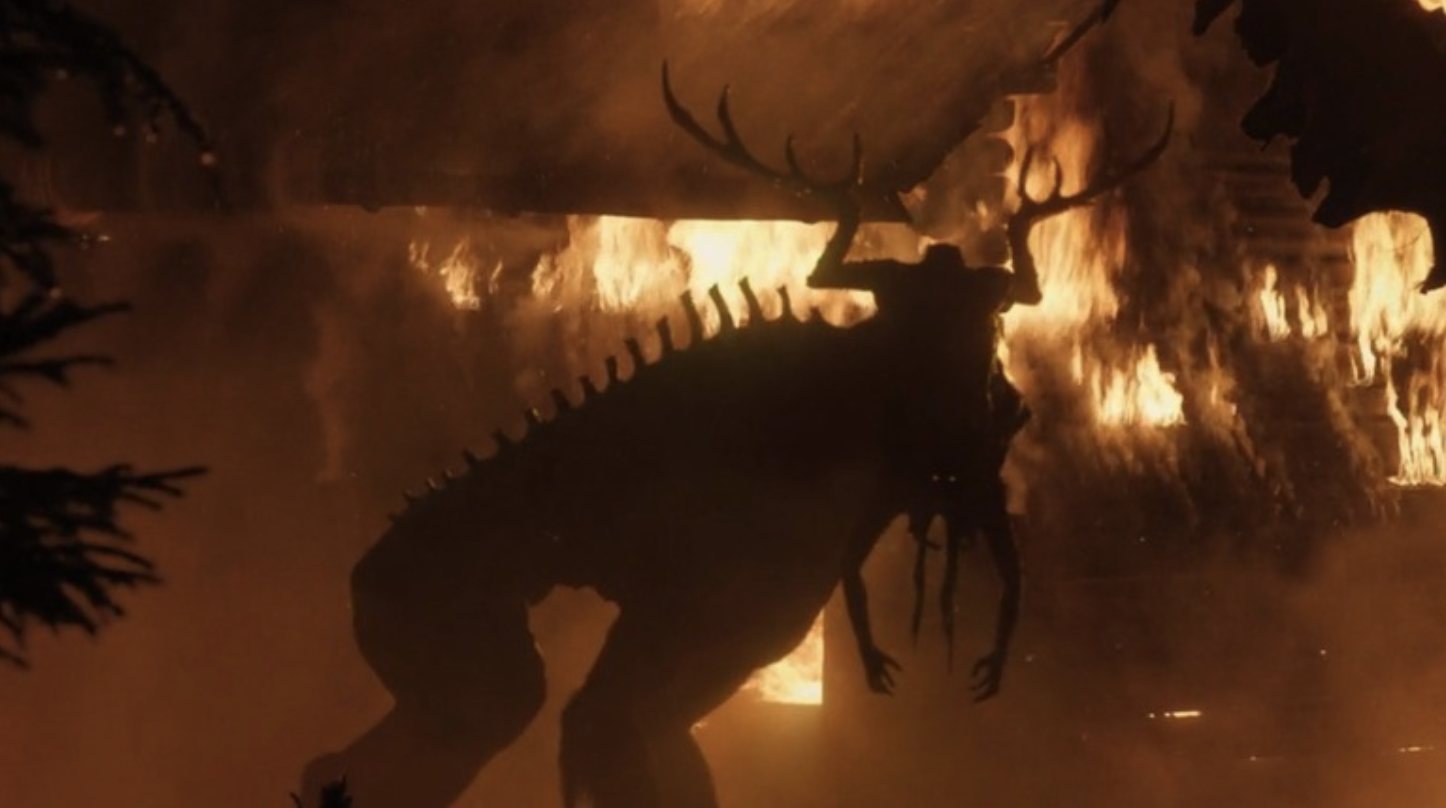
Isolation is a powerful theme in Horror. It strips protagonists of a support system, leaving them vulnerable and paranoid. From the eeriness of Life’s endless space to the tree-dense, person-sparse forest of today’s entry, isolation not only heightens the survival stakes. It enables an exploration of the darker aspects of human nature, with all comfort stripped away, revealing how fear can distort perception and lead to devastating choices.
Much like Life, The Ritual has a close-knit group batting a hostile enemy and growing mistrust in the middle of nowhere. David Bruckner’s creepy folk horror follows four friends on a hiking trip in Sweden, honouring their deceased friend Rob, a victim of a robbery gone wrong. As they navigate the foreboding Scandinavian woods they find themselves haunted, not only by the spectres of guilt over Rob’s death, but by something lurking behind the trees. Trust me when I say, you’ll never in a million years imagine what that something is, as in the closing beats of the movie we shift from a mostly grounded survival thriller deep into surreal Norse mythology.
Bruckner's direction shines. He builds tension methodically, allowing us to get immersed both the haunting Swedish landscape and a growing sense of dread, deeper into the forest and deeper into trouble. Each small moment of reprieve and reflection is pregnant with anticipation, the gradual reveal of the forest's horrors a masterclass in suspense. Keeping the audience on edge, intertwining moments of character reflection with sudden bursts of terror, it rivals Jaws for using ‘less is more’ as a rulebook for terror.
The Ritual transcends typical survival fare, delivering a gripping tale that resonates on multiple levels. A meditation on grief, guilt, and the bonds that both unite and fracture us, its final act pushes these themes to their limits, forcing characters to confront their pasts in a way that’s both horrifying and cathartic. Its exploration of fear is masterful; how it shapes our lives, influences our decisions, guides our hand. The characters' struggle against both external and internal demons underscores the idea that meeting our fears on even ground is essential to our survival. The external struggle, articulated through ritualistic elements that surface late into the runtime, also reveals the primal instincts that lie dormant within us - when all the trappings of modern life are stripped away, you’ll stare unspeakable death in the face. You’ll probably even kick it up the arse.
Michael O’Sullivan undergoes The Ritual here.
The Ritual is available watch on Prime.
Want more isolated horror? Check out The Damned (2024), The Lighthouse (2019) and An Taibhse (2024)
Listen to these chats we've had with The Damned writer and director and An Taibhse writer/director.
October 14 – The Hallow (2015)
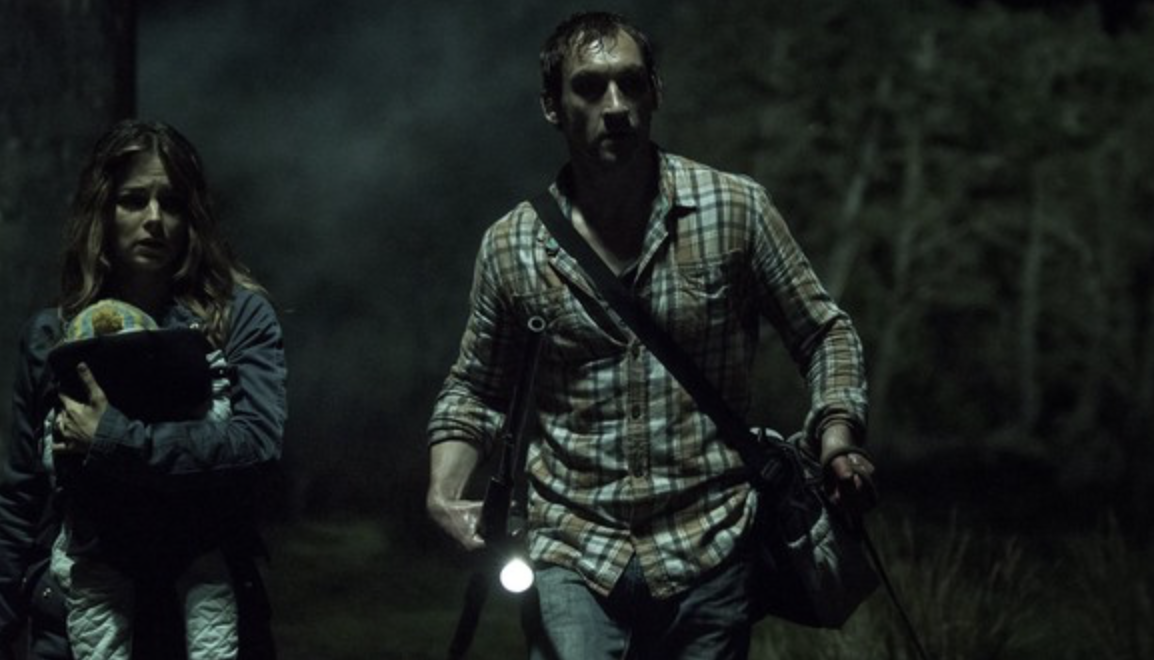
More forest spookery with today’s pick! The Hallow effectively blends Irish folklore with modern fears. A chilling Eco-Horror absolutely drenched in dark atmosphere, director Corin Hardy went on to direct The Nun (part of the hugely lucrative “Conjuring shared universe”), taking in a cool $366 million at the box office. Watching The Hallow, it’s not surprising to see how he got the gig. In the next of our contributors’ reviews, Thomas Caffery goes down to the woods today…
This Halloween, make some time for The Hallow.
The 2015 horror sees a young family move to rural Ireland. British dad Adam (Joseph Mawle) is a conservationist studying Irish forestry. Accompanied by his wife and young child, Adam is received coldly by the local populace. Despite their hostility, the locals generously warn him of a curse afflicting the forest to which they have moved: these tangled woods are host to the Hallow, a nasty bunch of Irish faeries given to the usual wickedness (abducting babies, murdering interlopers).
For a first-time director, Hardy’s work here is particularly assured, resulting in an oppressive and immersive vision of a very Irish horror. He is assisted in this by stellar production design, courtesy of Alex Cameron and Mags Linnane, alongside an extensive list of costume designers and makeup artists: the monsters of The Hallow are a gnarly, fascinating bunch of practically realised beasts. Even were the rest of the film a bust, these creatures are reason enough to watch.
Thankfully, everything else is not a bust. Hardy also wrote the script for the film, and he wisely limits the number of characters present. In interviews, he described the pitch for The Hallow as “Straw Dogs meets Pan’s Labyrinth”. While the scripting and overall narrative here is not quite as tight or polished as these films, The Hallow maintains a steadily escalating tension and uniquely nasty quality. The story allows for strong performances, a challenge to which the limited cast ably rise. Keep an eye out for Irish talents Michael Smiley and Michael McElhatton, both of whom make the most of otherwise minor roles.
Ten years on, this forgotten gem is well-worth digging up and experiencing anew: watch it late, with the lights down low.
The Hallow is available watch on Shudder.
For more evil Fae fare, check out Unwelcome (2022), The Hole in the Ground (2019) and Pan’s Labyrinth (2006).
In this podcast we catch up with Stephen Shields, The Hole in the Ground writer.
October 15 - Häxan (1922)
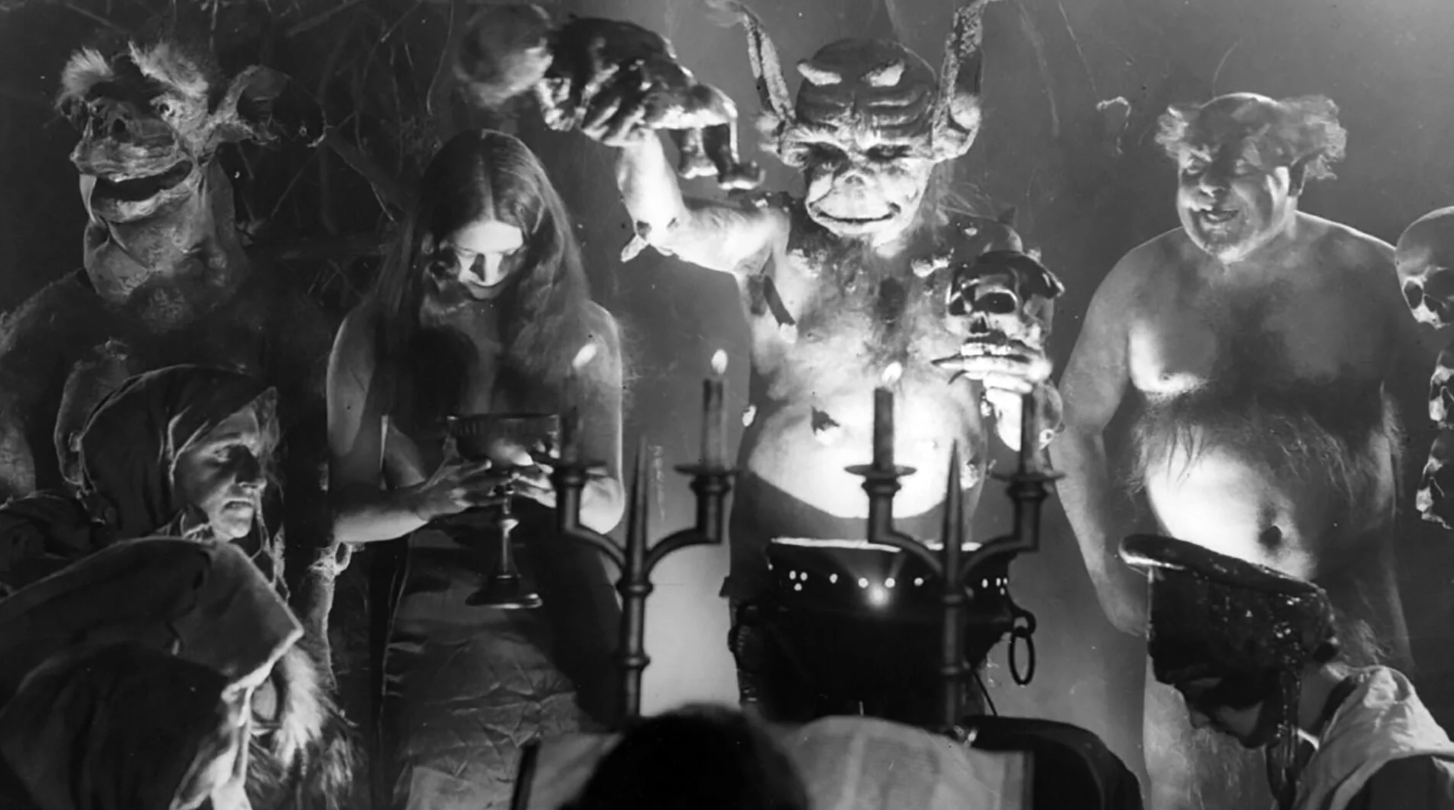
We step into the Wayback Machine for today’s movie. While 1922’s Häxan: Witchcraft Through the Ages shares similar DNA with The Hallow - themes of folklore and spirituality, exploration of fear and belief - the earlier movie is absolute lightning in a bottle. Part academic exercise, part visually stunning horror movie, it’s a unique curio that every Horror fan needs to experience. Contributor Oscar O’Sullivan gets his broomstick on…
“Centuries have passed and the Almighty of medieval times no longer sits in his tenth sphere. We no longer sit in church staring terrified at the frescoes of the devils. The witch no longer flies away on her broom over the rooftops. But isn't superstition still rampant among us?”
This narration, delivered in a string of inter-cards, perhaps best summarises the central idea of Häxan: Witchcraft Through the Ages, the pioneering early docu-drama. To call it a horror film is a stretch, but only in terms of genre - the subject matter makes it perfect Halloween viewing, even if it’s more likely to leave you educated than terrified.
Häxan divides itself into seven segments, each one isolating a certain aspect of Medieval beliefs and customs, with a loose overall story and plenty of asides from the schoolmaster-esque narrator, explicitly identified as director Benjamin Christensen. This narrator stresses in the opening address that, to the people of the Middle Ages, Heaven and Hell were places as real as any other. Belief in the supernatural was so strong and widespread that many who confessed to witchcraft probably even believed themselves guilty, and the Church was all too happy to roll across Europe and lay down the law on the subject.
In the name of accuracy (and fun), the film presents the Medieval world as its inhabitants believed it to be - full of horny demons, cackling witches and dark magic. The regular reassurances that these sights are depicted as pure fantasy does nothing to reduce their entertainment value, and the effects work is as exciting and innovative as any of the serious European horrors of the era. Witches step out of their sleeping bodies and whiz across the rooftops by night, Satan stalks the streets and forces himself upon unsuspecting maidens - let’s be honest, if you or I believed in all that, we’d find the world a pretty scary place too.
Perhaps the most affecting sections of Häxan are the stories of the inquisition and witch trials. Here, the magic is stripped away to remind us that superstition was a far more deadly force than an imagined Devil. The finale also draws explicit parallels between mental illness (as it was understood in the 1920s, anyway) and belief in the supernatural. For example, how is a Medieval nun claiming the Devil told her to steal a holy statue different from a kleptomaniac, unable to help herself from swiping jewellery and books she can’t even read?
Certainly on the lighter side when it comes to scares, Häxan is a perfect film for the more faint-hearted among us this spooky season, and a damn good piece of edutainment besides.
Häxan is streaming on Prime and is available for free on YouTube.
Like Häxan? Why not try The Phantom Carriage (1921), Nosferatu (1922) or Orson Welles’ F for Fake (1973 - not a horror, but another film that uniquely blends fact and fiction).
October 16 - Onibaba (1964)

More quality historical spookery, this time from Japan. A lush, trippy classic, Onibaba is a feast for the senses. The peak of atmospheric black and white Horror, it’s a pitch-dark look at the amoral nature of people corrupted by war. Contributor Will Penn dodges demons in feudal Japan…
They run, weighed down by wounds and armour. Around them, the world blurs into pulsing drums, grasses sweeping past, a rolling boil stretching as far as the eye can see. But the men hurry on. Behind them, their pursuers’ faces flicker through the walls of reeds like momentary gargoyles in their hunt. Finally, the men collapse. Blades rise from the grass, as if the land itself were ready to receive them. Their pursuers - two women - emerge, stripping armour and weapons from their victims. Then they sink back onto their beds, loot in hand, chewing between grotesque, gulping mouthfuls.
There is a reason that Kaneto Shindō’s Onibaba has inspired so much. From Willam Dafoe to the prosthetics for The Exorcist, its hannya mask has become a near ubiquitous symbol in cinema. What makes it so haunting is a vision both profane and primal, turning a Buddhist parable into a surreal erotic horror. Set against the backdrop of civil war in the 14th century, a destitute mother, her recently widowed daughter-in-law, and a returning soldier, Hachi, survive only by killing and stealing from samurai who wander into the grass. In and amongst the dangerously swaying leaves, the younger woman and Hachi begin a romance, leaving the mother, expertly played by Nobuko Otowa, in a dark and jealous aura. Leering faces fill the screen as Hikaru Hayashi’s score creates a propulsive and unnerving undercurrent.
Peter Bradshaw, in a review of the film in 2010, wrote that this “secularised version preserves the fear while removing Buddha”. A profound disorientation bleeds from the screen, with tales of horses giving birth to calves, suns rising black in a sky as dark as night, “as if the earth had been turned upside down!”. In the context of post-war Japan and Shindō’s oeuvre, the story of an enveloping violence and increasingly amoral victims is particularly unique. The landscape is one of simultaneous desire and fear: the grass caresses the land like a hand across a lover’s back in one shot and is a sea of searing blades in another.
The only things that feel real in this sway are jealousy, sex, and the gaping hole into which the women throw the bodies of their victims. The old lady’s descent down its nightmarish walls asks us to examine our own terrifying capacities for evil. The final sequence is an awful insistence that, in the words of the director, “people are both the devil and God”. Onibaba is a frightful allegory of the horrors of war, the darkness of desire, and the inversion of morality.
Onibaba is available to rent or buy from Prime.
Like Onibaba? You’ll love Kuroneko (1968), Ugetsu (1953) and Throne of Blood (1957).
October 17 – The Borderlands (2013)
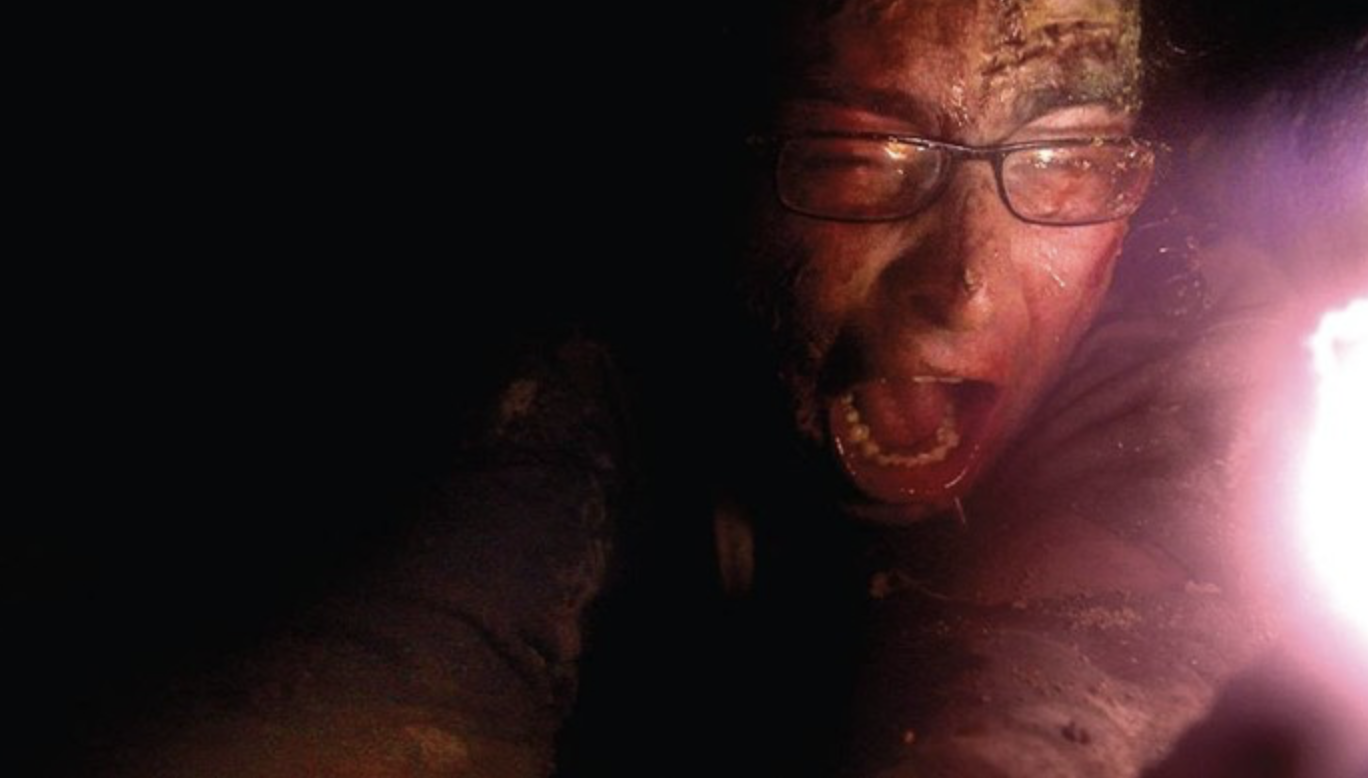
From a Buddhist parable to a Catholic cautionary tale, this week’s Found Footage Friday entry also deals with demons, isolation and primal human behaviour. The Borderlands is a chilling exploration of fear, scepticism, and the wafter-thin veil that separates reality from the supernatural.
This slow-burning gem revolves around a team of investigators, sent to a 13th-century English church to uncover the truth behind a series of mysterious occurrences. What begins as a routine investigation spirals into a terrifying confrontation and one of the worst fates in recent horror history.
The Borderlands takes some well-worn Horror tropes - an isolated village filled with hostile locals, a shamed priest grappling with his faith, a wisecracking atheist - and gives them a smart twist. Lead Holyman Deacon and techbro unbeliever Gray get on well; amicable conversations of faith and fakeness are cleverly used as exposition, and forward-thinking Deacon has no objection to wearing Gray’s cams and mics to document the case. The typical demonic possessions and/or exorcisms that tend to go hand in hand with religious investigations never factor. And we’re cleverly kept on our toes regarding the actual reason for the bumps in the night - could they be the work of a local priest desperate for attention? We’re certainly given enough evidence to support the claim.
As we delve deeper into the church's dark history, the tension escalates. Revealed is the fragile nature of human understanding, faced with the potential conclusion that the spookery is indeed down to forces beyond comprehension - the narrative deftly poses questions about the nature of belief, and the lengths individuals will go to, to disbelieve.
Director Elliot Goldner - in his only feature to date - cleverly bypasses a common bugbear of the Found Footage subgenre. By assigning cameras to more than one character, along with Gray rigging multiple free-standing cameras in the church, he’s able to include a variety of realistic, organic views and angles to keep things interesting. This allows for some ingeniously tense scenes where we’re presented with one character experiencing paranormal events while others are elsewhere, unaware. Also solved is that gripe as old at the subgenre itself - why don’t the characters drop their cameras and run? Simple - they’re literally wearing their cameras, and they’re always recording.
Impressive performances and canny, assured direction lead us from an effective but traditional tale of religious exploration and challenged faith to an absolute rug-pull of an ending; a raw, claustrophobic, deeply disturbing climax, impossible to unsee and brilliant in its execution. Trust me, this one will stick with you.
The Borderlands is a superior entry in the subgenre. Inventive, genuinely scary, and well worth your time.
The Borderlands is streaming on Shudder.
Want more terrifying religious-themed Found Footage? Check out The Devil’s Doorway (2018), The Last Exorcism (2010) and Jeruzalem (2015).
October 18 - The Exorcist III (1990)
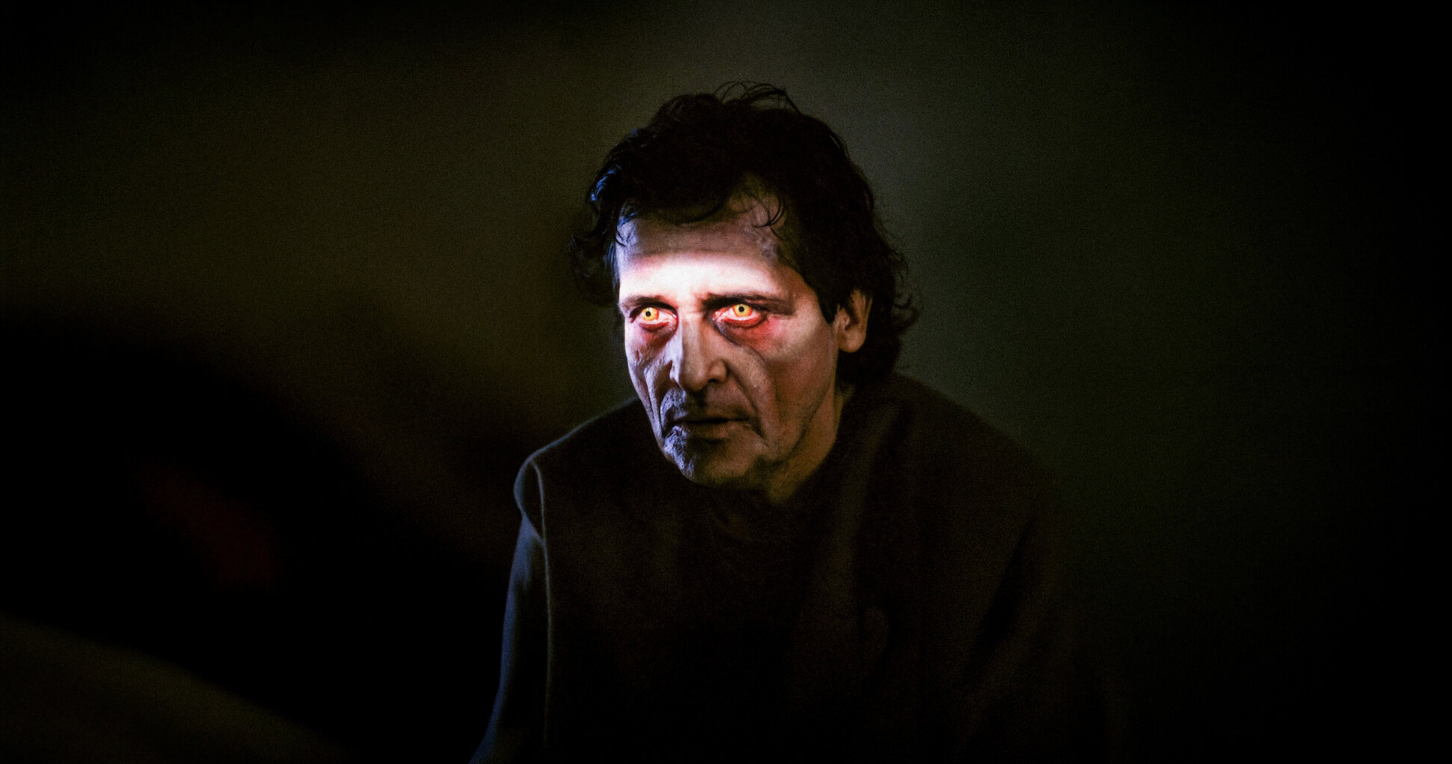
Yes, I know I said we wouldn’t be covering any of Horror’s big guns. But sequels don’t count, bub. Besides, The Exorcist III ticks all the right boxes. It’s underseen. It’s underrated. And while the recent TV series was surprisingly solid, this “threequel” is still the best Exorcist entry since the groundbreaking original.
Director William Peter Blatty (author of the book the original was based on, wanting to put right the muddled, poorly-received first sequel) takes a bold narrative shift. For most of its runtime, The Exorcist III plays out like a police procedural movie. Seventeen years after the events of The Exorcist, Lieutenant William Kinderman (George C Scott, replacing Lee J Cobb) investigates a series of gruesome murders. Kinderman’s friend Father Dyer is hospitalised and soon after becomes the next victim, every drop of his blood clinically removed. All signs point to a fellow patient of Dyer’s, but the problem is she’s a very old, very senile woman who can’t stand without assistance - hardly a credible suspect.
The strange investigation leads Kinderman to two supposedly deceased figures from his past, inhabiting the same body and residing in an isolation cell in the same hospital Dyer was murdered in - Father Damien Karras, the eponymous exorcist who took his life to best the original film’s demon, and the Gemini Killer, thought to have been executed 15 years ago. This “Patient X” bears an uncanny resemblance to Karras, but claims to be the serial killer, taunting and unsettling Kinderman with knowledge only he would know. As wearily sceptical as he is, Kinderman starts to believe the Gemini Killer’s claims of body swapping and immortality through infamy.
Something quite unusual about The Exorcist III is its protagonists. There’s nary a screaming teen in sight - this is horror for the grownups. The hero is in his 60s, and most of the supporting cast are in a similarly mature age bracket. It’s a refreshing change of pace - Kinderman is vintage George C Scott; gruff and commanding, barking out orders and snapping at anyone daring to question him. His interactions with Ed Flander’s Father Dyer, friend and fellow confidante of Karras are authentically easy going and - surprising in an Exorcist movie - very funny; they’re the original Grumpy Old Men. Meanwhile, The Gemini Killer has Horror Hall of Famer Brad Dourif (voice of Child’s Play’s Chucky) at his unhinged best. His verbal battles with Kinderman are electric, his tendency for drooling, theatrical monologues about Shakespeare, smiling and efficient blood removal are both captivating and horrifying.
While most of its runtime is a slow, almost languid affair, you can’t talk about The Exorcist III without mentioning one of the best, most effective jump scares in Horror history. To cover it in detail - it deserves a thesis or two, such is its cleverness - would be to spoil it. It unfolds during a seemingly innocuous scene, builds gradually, subverting the typical tell-tale signs that a sudden shock is coming. No matter how many times I watch it, I still get blindsided. You have been warned.
The Exorcist III is classy, precise horror, trusting clever writing and a solid cast over cheap thrills to generate genuine scares. Had it been the first sequel out of the blocks, it’d be regarded as a classic today. As it stands, it’s a criminally underrated entry in the Religious Horror subgenre. It will scare you silly.
Note: Of the two Exorcist IIIs available - the original and “director’s cut” - the latter is the better watch. Yes, more Jason Miller as Father Damien Karras is always a good thing, and while the Blatty’s version removes many of his scenes, it’s brainier, creepier, less reliant on gory shocks, and more in tune with the original. Watch them as a fantastic double-bill from here on out.
The Exorcist III Director’s Cut is available to rent or buy here. The theatrical cut is available to rent or buy on here.
Want more slow-burn, grown-up Horror? Check out Under the Skin (2013), Jacob’s Ladder (1990) and Don’t Look Now (1973).
October 19 - Lucifer Rising (1972)

More dealings with the devil in today’s pick. Surreal and provocative, Kenneth Anger’s Lucifer Rising is a strikingly avant-garde exploration of the occult, encapsulating the spirit of the 1960s counterculture while weaving in elements of mysticism and surrealism. This short, sharp shock of a film invites us to a psychedelic landscape where the myth of Lucifer is reimagined, not as a demonic figure but as a symbol of enlightenment and artistic inspiration. The narrative unfolds through a series of hypnotic visuals that merge Egyptian motifs with a haunting score by Bobby Beausoleil, a character whose own dark backstory adds more layers of complexity.
A mesmerizing blend of ritualistic imagery and vibrant colour, it offers up an experience that feels both timeless and deeply anchored in its era. Anger’s portrayal of Lucifer as a “lightbringer” challenges conventional interpretations, presenting a figure that embodies creativity and rebellion against societal norms.
Lucifer Rising has undeniably influenced contemporary filmmakers, making it a cultural milestone that continues to inspire and perplex. In a world increasingly grappling with conformity, why not take a lesson in the art of defiance?
Neil Cadieux writes: "Lucifer Rising is the final film of a devout, self-described disciple of the infamous occultist Aleister Crowley. Kenneth Anger’s Lucifer Rising is as authentically occult as horror cinema gets. Steeped in esoterica, the short film chronicles the ritualistic summoning of Lucifer through a globe-trotting tour of Egypt, Stonehenge, Germany and America.
Anger presents an environment where time and space play second fiddle to ritual, told through the perspective of its participants within a fluid, millennia-spanning vision of reality. The film is awash with visual references to Crowley’s Thelemic worldview. The opening sequences bear witness to the primordial birth of Satan followed by the summoning of Horus in ancient Egypt by Isis and Osiris.
Whilst a passing understanding of Thelemic esoterica is useful in deciphering the insanity contained within this imagery, it is not quite a prerequisite. If anything, the film works better as an introduction to Anger’s charmingly bold style and original approach to horror..."
Read Neil Cadieux’s full analysis of Lucifer Rising here.
Lucifer Rising can be watched online for free here and can be bought as part of a collection here.
For more experimental Horror check out Skinamarink (2022), House (1977) and Santa Sangre (1989).
October 20 – Birth/Rebirth (2023)

From the final film of a trailblazer in Queer Horror to the debut feature of a new face about scorch her own path. Laura Moss’ Birth/Rebirth is a provocatively prescient retelling of a genre stalwart, a deft exploration of womanhood and motherhood that challenges the notion that these roles must be defined by sacrifice and suffering. Film Ireland’s Associate Editor Gemma Creagh takes a scalpel to a future classic:
Thoughtful, distinct, and nothing shy of brilliant, this Frankenstein reimagining explores themes of motherhood and grief. Birth/Rebirth is an incredibly bold first feature from Laura Moss that did well on the festival circuit and wowed audiences with its crisply fresh take on body horror.
In an overstretched hospital buckling under the pressure of COVID, awkward Dr Rose Casper (Marin Ireland) works as a forensic pathologist. She spends her time in the company of cadavers in the deathly quiet of the morgue. Why would someone so deeply introverted engage in uncomfortably transactional, intimate encounters with strangers? Why, to get pregnant of course.
Meanwhile, Celie Morales (Judy Reyes) is a warm and dedicated maternity nurse – a single mother whose life revolves around her adorable five-year-old daughter, Lila (A. J. Lister). Overworked on a gruelling shift, Celie checks her phone to receive a series of messages relaying the escalating severity of Lila’s symptoms. She’s sick. Very sick. But by the time Celie hears them, it’s too late. Meningitis claims the life of her daughter.
Covertly, Rose takes Lila’s body home. The illness has made Lila the perfect human candidate for Rose's experiment: reanimation using stem cells from her aborted pregnancies. When a grief-stricken Celie forces her way into Rose's apartment, she discovers her daughter is alive… sort of. Rose and Celie, bonded by this dark science, are forced to go to the ultimate extremes to make sure Lila stays that way.
The writing is outstanding; despite the sensational premise, the film is grounded in a tangible reality. Each plot thread is tightly interwoven, every character complex and conflicted. There’s a morality to Rose’s detachment; she’s fair and considerate. Celie’s dedication to others is the very reason she loses her daughter. Their friendship feels real, and yet somehow, there's time to examine the toll of pregnancy and womanhood, as well as the burden of responsibility in creating life. The dynamics of these two leads work well, underpinned by quietly powerful performances. And yet, despite the pitch-black subject matter, there’s a sense of empathy that makes this film… well, not quite the gruelling watch it may seem from the trailer.
From a technical standpoint, each element of Birth/Rebirth supports, if not elevates, the storytelling: the bustling world of the hospital, the practical production design of the medical procedures, the distinct and superbly cinematic camerawork by Chananun Chotrungroj, and the haunting, haunting sound design. These ensure the tension is palpable, and certain key scenes that the film builds to are unforgettable. But these will remain undescribed here to avoid any spoiling.
Because, if you haven't watched this film yet, go watch it. ASAP. The fact that so few fellow film aficionados have seen Birth/Rebirth is something of a travesty. If Moss continues to create films at this level, she could well become one of the defining horror directors of her generation. Now, would someone please give her some money?
Birth/Rebirth is available to rent from Apple.
Want more deep dives into more intelligent Body Horror? Check out Frankenstein (2025), Bring Her Back and Nocebo (2022).
Listen to this chat we had with Birth/Rebirth Director and Nocebo director.
October 21 - Sleep (2023)
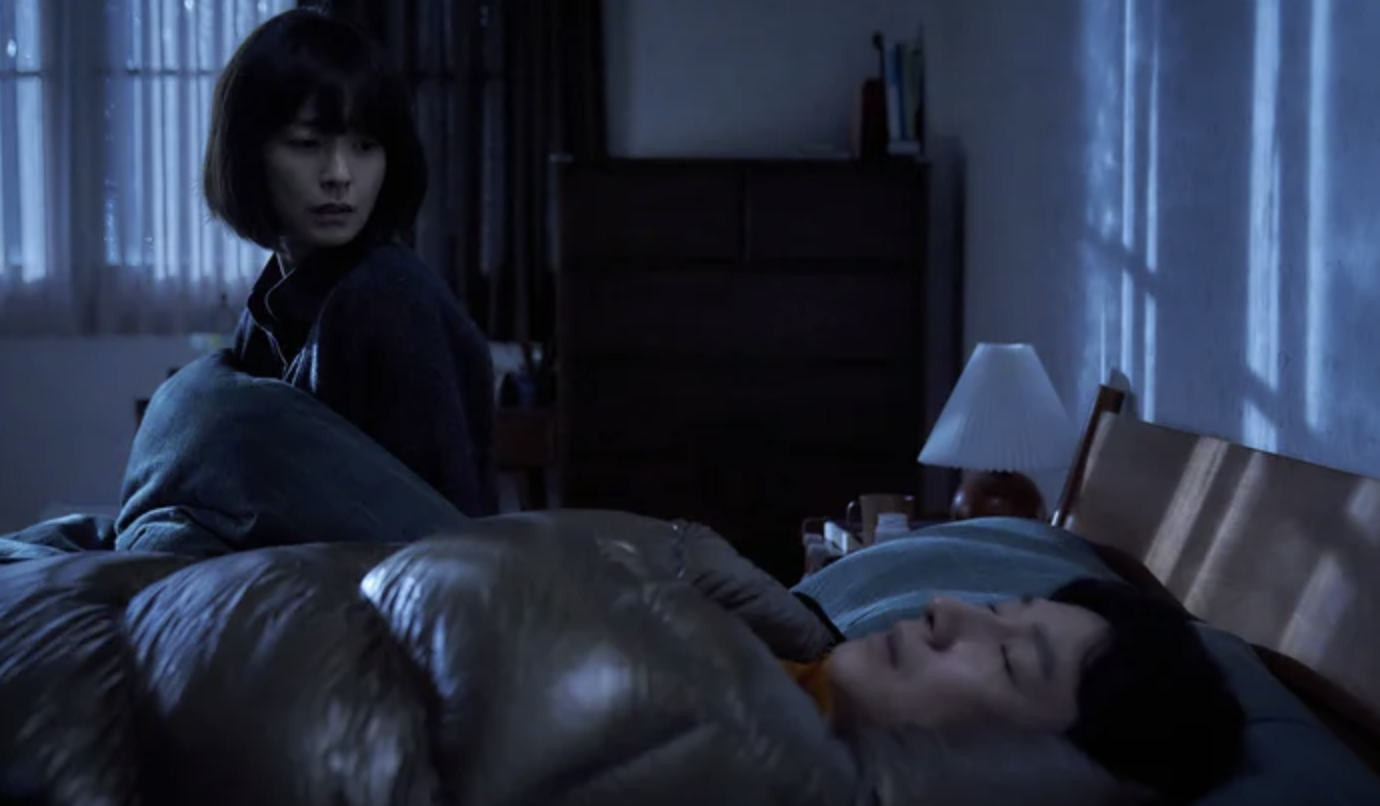
Another of Horror’s exciting new voices (this one mentored by Palme d’Or winner Bong Joon-ho, no less) had his directing debut in 2023. Much like Birth/Rebirth, Sleep is a modern twist on a classic gothic horror premise - a woman terrified by the capabilities of her husband. A tense, darkly funny affair, it’s impressive work for a first-time, juggling claustrophobic horror with marital drama in weird and wonderful ways. Assistant Editor June Butler gives her wide-eyed take below…
Sleep is a 2023 Korean horror/black comedy that ticks every box in the ‘scary’ genre and is certain to frighten the living bejaysus out of cinemagoers.
Director Jason Wu was about to marry his partner of seven years. In the lead-up to the nuptials, he found himself facing a crisis of confidence. There were seismic changes coming down the line and Wu (perhaps subconsciously) was trying to psychologically embrace the huge decision he was about to make. While Sleep does not tell quite the same story, it addresses a similar narrative where a seemingly happy event can trigger potentially catastrophic consequences and there is a degree of the unknown that keeps audiences on the edge of their seat from the onset. A young married couple living in Seoul, are anxiously awaiting the birth of their first child. As the date looms ever closer, Hyeon-soo (Lee Sun-kyun) and Soo-jin (Jung Yu-mi) begin to fret as Soo-jin’s due date approaches. They live in a tiny apartment, already packed with accoutrements of living – sofas, beds, tables, chairs. Now they are adding buggies, toys a cot and playpen. Their world appears to be closing in on them and both Hyeon-soo and Soo-jin are ill-equipped to deal with it.
Hyeon-soo begins to have problems sleeping – during the night, he begins to scratch his body to the point of opening the skin and causing bloody welts to appear on his arms and face. Horrified, Hyeon-soo and Soo-jin attend a doctor who prescribes pills that will remedy the situation. Initially, the tablets appear to work but it soon becomes apparent that Hyeon-soo’s issues are beginning to worsen. By now, Soo-jin has given birth. She is awoken through the night by Hyeon-soo’s nocturnal ruminations, but the problems begin to seriously ramp up with Hyeon-soo now sleepwalking for hours when darkness falls. His behaviour has become menacing, erratic and inexplicable. Soo-jin is terrified that he will inadvertently harm their child during one of his somnambulistic jaunts.
As tensions starts to rise, director Jason Wu throws in some extremely well-timed moments of comic relief – just enough for the pressure to dissipate until it is time to bump it up again. This back and forth, is an aptly placed mechanism to draw audiences in, and repel them in equal measure.
The great Russian director, Andrei Tarkovsky once said "When I sleep, I know no fear, no trouble, no bliss. Blessing on him who invented sleep, the common coin that purchases all things, the balance that levels shepherd and king, fool and wise man. There is only one bad thing about sound sleep, they say it closely resembles death."
After watching Jason Wu’s chilling film, you will never want to wake up again.
Sleep is available to watch on BFI Player.
Want more suspenseful Horror? Check out Presence (2024), The Others (2001) and The Wailing (2016).
October 22 - Mute Witness (1995)
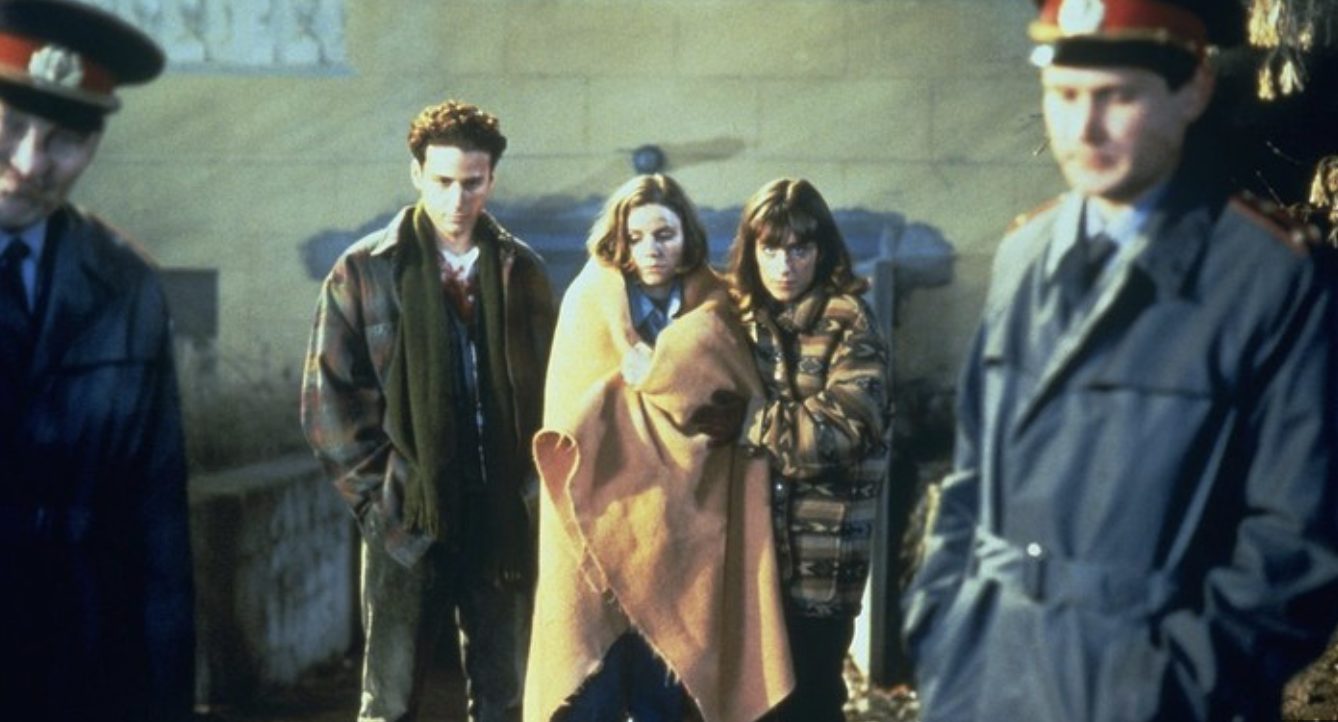
From one intense, pulse-racing ordeal to another, Mute Witness sits high on the list of the best 90s Horror movies you’ve probably never seen. Another directorial debut, this slick, psychological Thriller/Horror is a perfect example of a simple premise executed masterfully. Make sure to keep an eye out for an absolutely bonkers cameo from a cinematic titan, shot ten years before the rest of the production. Today’s contributor Ronan Power speaks up…
Anthony Waller’s Mute Witness (1995) is a taut, nerve-jangling British–German–Russian co-production that masterfully fuses horror, suspense, and black comedy into a breathless cinematic experience. Winner of the Special Jury Prize at the Festival International du Film Fantastique de Gérardmer, this underrated thriller deserves recognition as one of the most inventive genre films of the 1990s.
Set in Moscow, the film follows Billy Hughes, a young mute make-up and special effects artist working on a low-budget horror movie in an abandoned building. After accidentally being locked in overnight, Billy stumbles upon a horrifying scene: the filming of what she initially assumes is another fake gore sequence turns out to be a real snuff movie. When the killers discover her, a terrifying chase through the labyrinthine corridors of the building ensues, plunging Billy into a desperate fight for survival.
What follows is a relentless game of cat and mouse between Billy and the Russian mobsters whose brutality she has witnessed. Waller wrings maximum tension from the film’s confined setting, using light, shadow, and sound to create a palpable sense of fear. Billy’s muteness becomes the film’s most striking device as it heightens her vulnerability while forcing the audience to experience terror through silence, gesture, and expression rather than dialogue. This clever narrative choice transforms the usual scream-queen trope into something deeper and far more engaging.
The cinematography turns Moscow’s decaying architecture into an additional antagonist dark corridors, flickering lights, and echoing hallways amplify the atmosphere of dread. There are also flashes of dark humour and irony that punctuate the suspense, allowing brief moments of relief before plunging viewers back into tension.
The plot’s complexity grows as the story expands beyond the initial chase. When Billy finally escapes and reports the crime, she is dismissed by the police. Soon, she becomes entangled in a deadly web involving a missing computer disk and a shadowy crime lord known only as “The Reaper.” The stakes rise inexorably toward a gripping and unpredictable finale.
Performances are uniformly strong, with Marina Zudina giving a remarkably physical, expressive portrayal as Billy. A delightful surprise comes in the form of Sir Alec Guinness, in one of his final film roles, lending quiet gravitas to the production.
Mute Witness is a cleverly crafted, pulse-pounding thriller inventive, suspenseful, and brimming with cinematic energy.
Mute Witness is available to watch on BFI Player.
Follow up Mute Witness with more quality Thriller/Horror – try Watcher (2022), The Gift (2015) and Speak No Evil (2022).
October 23 - The Autopsy of Jane Doe (2016)
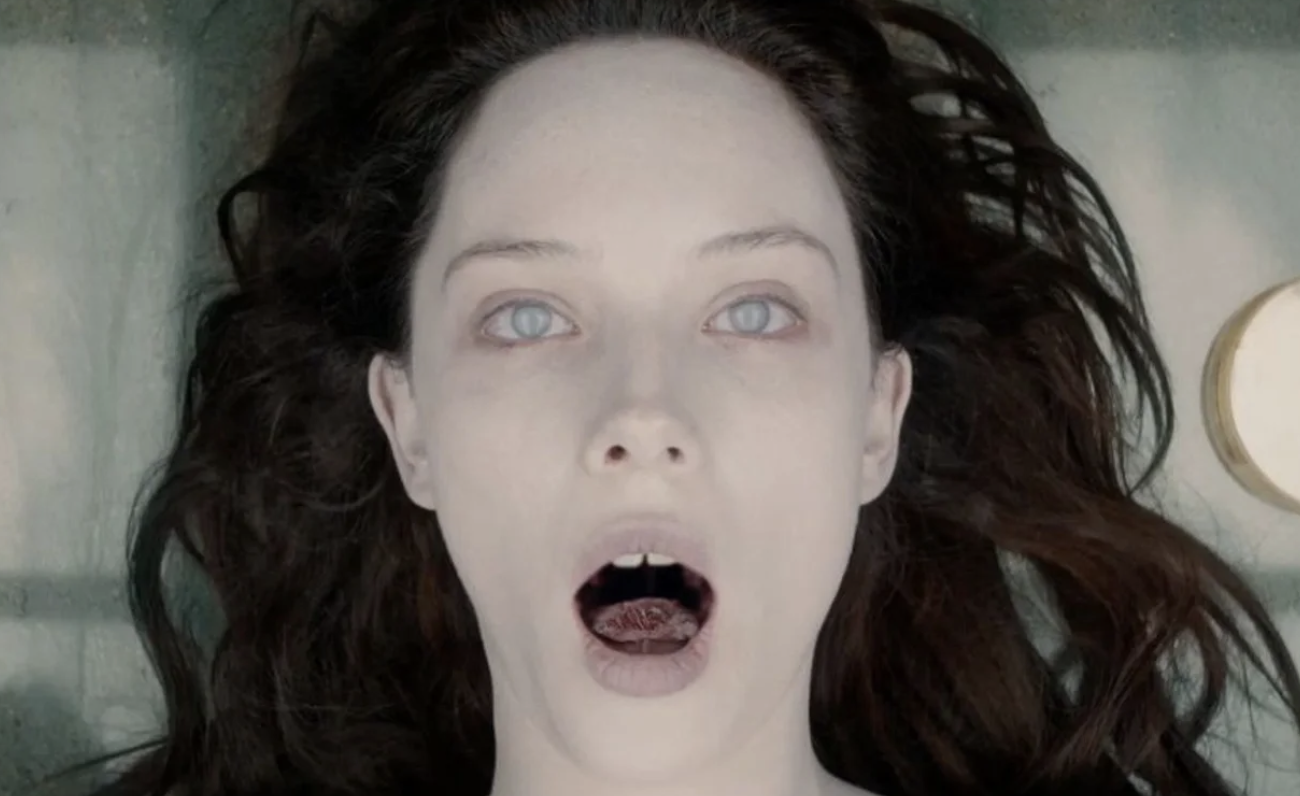
Being a horror fan sometimes means sifting through a lot of fine-but-forgettable fare in search of a diamond in the rough. For every 10 - if you’re lucky - unremarkable entries, you’ll find something that resonates. And every so often, you’ll uncover something that blows your socks off. Today’s entry, another Thriller/Horror enriched with mystery and tension, comes with a warning - it’s scary. Seriously scary. Don’t believe me? Ask Stephen King, who urged his X followers to “watch it, but not alone”.
In The Autopsy of Jane Doe, a simple, ice-cold tale unfolds within the claustrophobic confines of a small-town morgue. Tommy and Austin, a father-son duo running a local funeral home, have their routine disrupted when they receive an unidentified female corpse, later named Jane Doe, for examination. As they begin to uncover her mysterious death and strange wounds - a missing tongue, wrists and ankles broken, blackened lungs - Tommy and Austin suspect a ritualistic act has taken place. But why? And should they fear Jane’s lifeless body?
It has the feel of a timeless, Shirley Jackson-esque ghost story. For the most part it’s an intimate two-person, single location affair. It also makes the canny decision to be a Horror movie where the main ‘horror’ of the setup is exposed from the get-go, and maintained throughout - there’s little room for us to breathe when we’re sharing a room with a corpse. This atmosphere, thick with dread, along with unnaturally bright cinematography, immerses us in a terrifying environment where every creak and shadow feels alive and predatory. The morgue setting is expertly utilised, making the most of its cramped, sterile atmosphere to ramp up the claustrophobia. As the autopsy progresses, we’re met with questions. And for every question, father Tommy thinks he has an answer…until he doesn’t. Watching clinical scientific reasoning butt heads with unexplainable spookery and be roundly thwarted is unnerving to the point of nausea. We - like Tommy - cannot explain away the unnatural events happening with cold solid facts. What’s scarier than that?
The film also gets elbow-deep (sorry) in the societal implications of how we regard and handle the deceased, particularly women. Jane Doe's body is not just a lifeless vessel; we’re challenged to consider the stories that bodies can tell. We’re told that every individual has a narrative deserving of respect and dignity, even in death.
The solid dynamic between father and son adds another layer to the film, especially with their contrasting approaches to both life and death. Tommy embodies a traditional view of death as a natural part of life, while Austin grapples with the emotional weight of his haunting work. Brian Cox delivers a compelling portrayal of both a father and professional, burdened by the weight of his responsibilities. In contrast, Emil Hirsch’s captures the youthful curiosity and fear that drives Austin. Their chemistry feels authentic, grounding the supernatural elements of the story in a relatable human experience.
The Autopsy of Jane Doe has cropped up on innumerable ‘must-see underrated horror’ lists since its release nine years ago, and for good reason. To get deeper into the why would spoil it. It’s a movie best experienced blind, with every twist and turn socking you in the stomach, a seemingly straightforward premise that gradually ramps up the terror until it becomes unbearable. It feels cursed, dangerous. Much like The Exorcist, there lies a feeling of evil in every frame. It’s a hell of a ride.
The Autopsy of Jane Doe is available to rent and buy on Apple TV.
Want more classy, intimate frights? Watch The Woman in Black (2012), The Others (2001) and Session 9 (2001).
October 24 – Trollhunter (2010)

From the sublime to the ridiculous - in the best way possible - for this week’s Found Footage Friday. In André Øvredal’s Trollhunter a trio of student filmmakers set out to follow a suspected poacher and wind up tangled in a national secret: trolls live in Norway, and one underpaid, gruff government employee is tasked with keeping them out of the headlines. From that sly premise, Øvredal builds a film that oscillates between wonder, bureaucratic absurdity and monstrous spectacle, using the Found Footage framework not as a cheap scare tactic but as a way to place us inside an evolving field report.
The movie wastes no time establishing tone. Initially, it feel like a college doc assignment - awkward, inquisitive, and just competent enough to feel authentic. Then everything tilts when Hans, the titular hunter, yells "TROOOOOLLLLLLLL!"
Suddenly, the forest erupts. What follows is a succession of encounters that treat mythological rules as workplace protocols: trolls feed on stones, UV light petrifies them, and certain religious taboos matter in practical ways (both the best joke and tensest moment revolve around the trolls’ ability to sniff out Christianity). This treatment turns legend into logistics, and the resulting deadpan humour is one of the film’s sharpest tools - Hans complains about lousy hours and no overtime; the idea that the national infrastructure (power lines) doubles as troll control reads as a sly poke at how states manage land, myth, and the inconveniences of modern life.
Visually, Trollhunter pulls off a neat trick. The on-brand Found Footage camerawork can feel claustrophobic during chases, but it also opens up into expansive, breathtaking vistas; quite the rarity for the subgenre. And Norway’s forests, lakes, and peaks aren’t just backdrops - they argue for the film’s stakes: a landscape so big it could hide entire ecologies and histories. When Øvredal obliges us with clear, prolonged shots of his creatures, the film sidesteps the genre’s usual frustration - never seeing the monster - and leans into the pleasures of spectacle. The trolls are varied, grotesque in ways that nod to traditional Scandinavian art (John Bauer’s brilliant book of artwork is clearly an inspiration), and frequently more bonkers- than monstrous-looking. The balance, monsters that are both odd and credible, pushes the movie toward feeling like a folkloric, fairytale Jurassic Park.
Trollhunter soars in its tone and imagination. It refuses to treat the trolls as mere punchlines or camp monsters; instead, they’re woven into a social ecology; handled, regulated, joked about, mourned. The performances, particularly Otto Jespersen’s weary, quietly comic Hans, give the film an earthy centre. The students are credible as observers, sometimes irritating, often naïve. But they function well as our avatars whose increasing readiness to accept the uncanny mirrors the film’s own gradual escalation from mockumentary curiosity to full-on strange and wonderful adventure. It also plays with our expectations, subverting typical tropes. Instead of building tension around the fear of the unknown - common in many Found Footage films - Trollhunter presents its trolls early on, shifting the focus to how the characters react to these fantastical beings. The humour derived from their disbelief and subsequent encounters adds a layer of enjoyment that makes it stand out.
For viewers fatigued by Found Footage, Trollhunter is an argument for what the format can still do when married to genuine invention. It combines engaging storytelling with sharp satire, all while showcasing Norway’s landscapes and folklore. It balances humour and horror effectively, creating an entertaining experience that resonates with both fantasy enthusiasts and casual viewers alike. It is often witty, frequently thrilling, and offers more than monster-movie kitsch: a sly satire of bureaucracy, a love letter to the absurd, and some genuinely thrilling moments. If the premise hooks you - a government office that treats myth like municipal work - the film follows through with imagination and enough heart to make the hunt worth it.
Trollhunter is available to rent and buy on Prime.
Want more funky, cryptid creature-features? Watch Exists (2014), Frogman (2023) and Ragnarök (2013).
October 25 - The Blackening (2022)
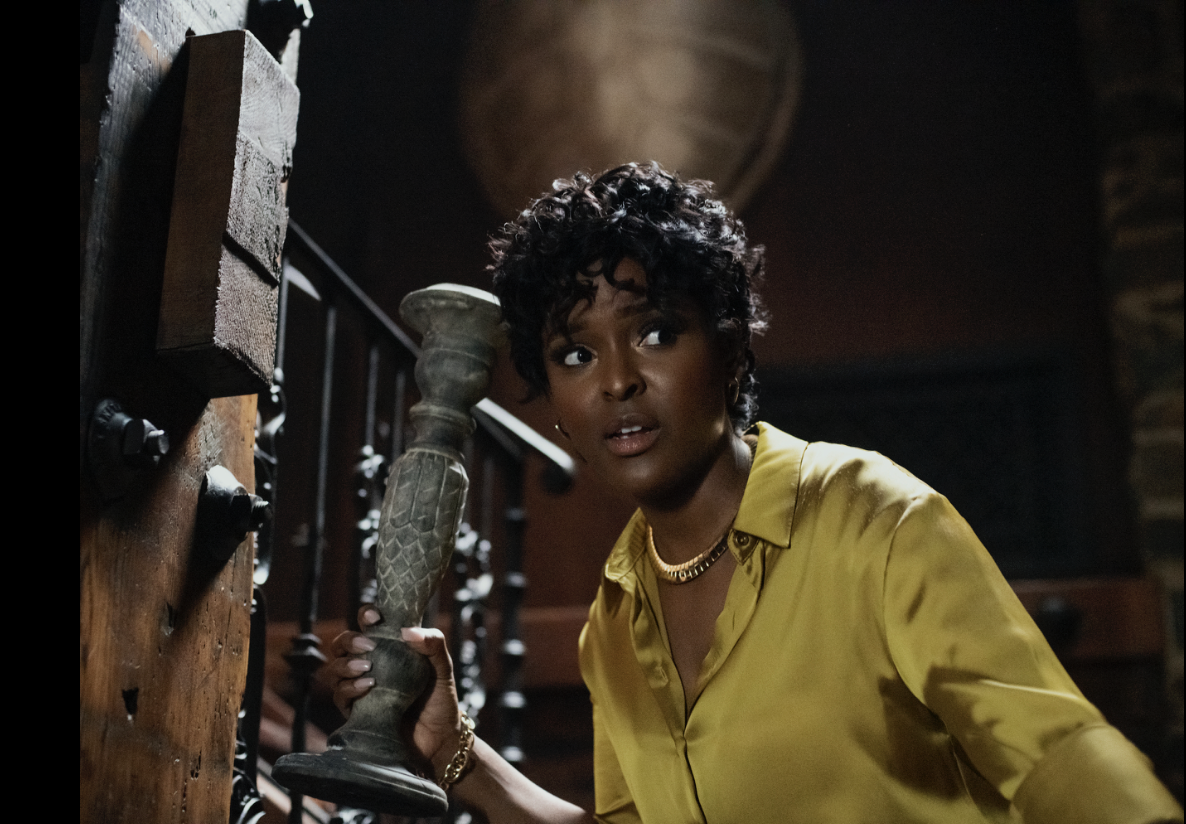
It's time for more Horror Comedy today, and this one is more funny than frightening. The Blackening explores racial stereotypes and media clichés through sharp humour delivered with a knowing wink. It’s a popcorn flick with a message, turning horror tropes inside out, daring to ask: what happens when everyone is the token Black friend? Contributor Dolapo Agunbiade checks in…
If you’re searching for a laugh-out-loud slasher/mystery then look no further than The Blackening. The film follows seven friends who book a cabin in the woods for a relaxing mini reunion. Once they get to the seemingly pleasant location, they realise something is horribly awry, and they are tasked to find their missing friends through a menacing game of trivia - where horrific outcomes are attached to wrong answers.
Despite there being a large ensemble, each character has their moment to shine. Another element that makes The Blackening an enjoyable watch is the depth of drama that is embedded alongside the comedy. The film does not shy away from delving into the various relationship issues and character flaws.
The Blackening is ideal for those who want to gently ease themselves into the spooky nature of autumn - as it leans more towards comedy than horror. The film is centred by comical cultural references and scattered with gore. It excels at comedy, which is to be expected from director Tim Story, whose previous credits include the Ride Along, Think Like a Man and some of Kevin Hart’s earlier comedy specials.
For those who are yet to cut back on subscriptions in preparation for Christmas, The Blackening delivers on Prime.
Thirsty for more sharp, biting Comedy Horror? Watch The Purge (2013), The People Under the Stairs (1991) and They Live (1988).
October 26 - Vamp (1986)
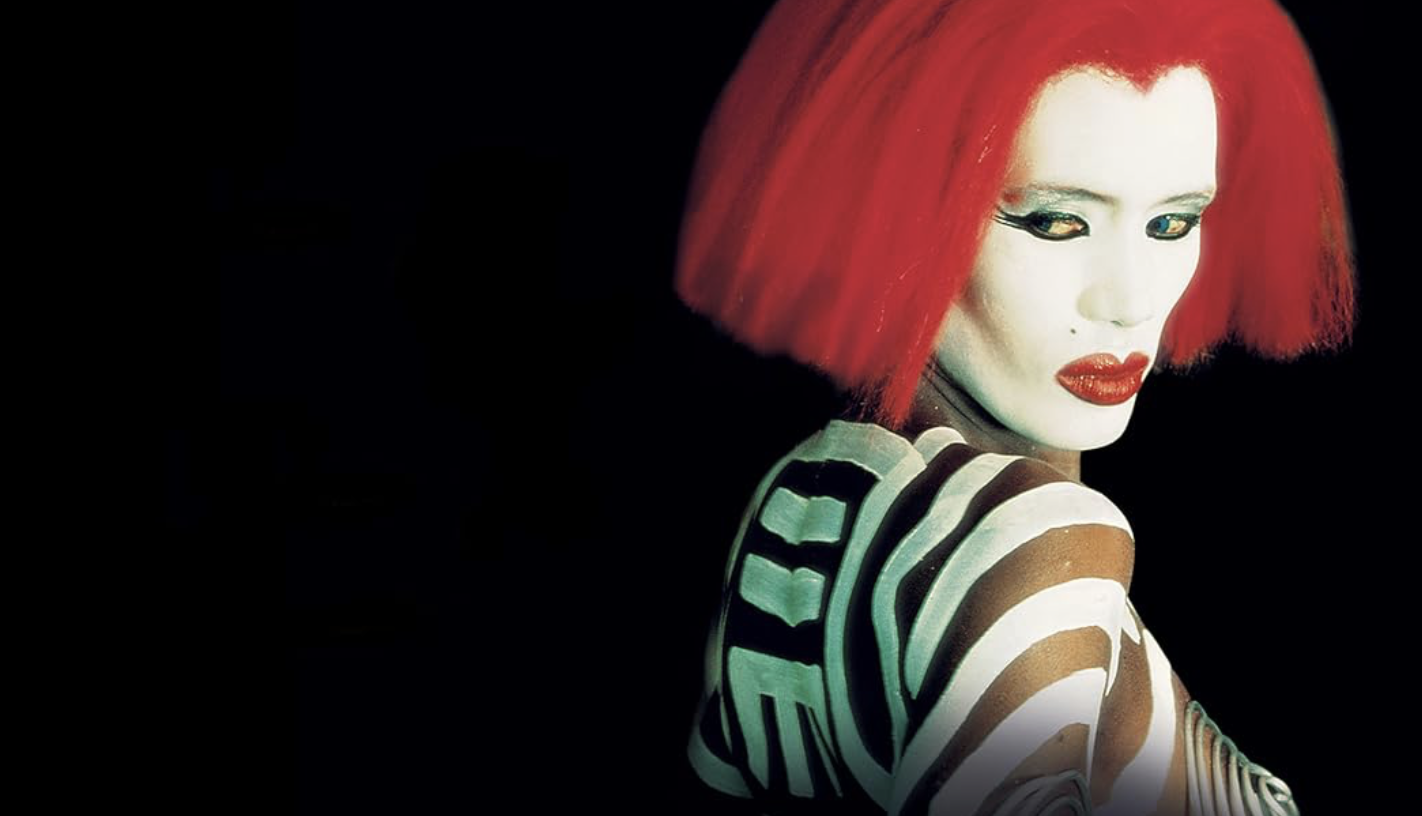
We’re in a little Horror Comedy subsection at the moment, and this gem is as 1980s as it gets. Vamp is the cinematic equivalent of stumbling into a neon-drenched nightclub at 2 in the morning, and realizing all the bouncers have fangs. The plot is as straightforward as a whiskey, no ice; two horny young bros head into the city to recruit a stripper and impress a fraternity, only to discover the club they pick is a vampire hive, run by a performance-art predator in metallic lingerie. The ensuing night spirals into alleyway chases, dead-end rescues, and splashy confrontations where the drink of choice is blood with a twist of sleaze. Welcome to From Dusk til Dawn: The College Years.
Vamp is stocked to the gills with charm, gags and attitude. The soundtrack buzzes, the lighting is cranked to radioactive, and the camera has music-video style that papers over a low budget. Of course, as with every other movie she stars in, the big-ticket attraction is one Ms. Grace Jones. She doesn’t so much play a dominatrix vampire as go about her everyday life and let someone record it - and I actually believe this to be the case. Every time she prowls into frame, the movie grows an extra set of cheekbones. Her dialogue is minimal; her presence is maximal. As always, she can’t be contained. The club’s stage can barely hold her, the movie even less so. She’s a razor-sharp exclamation mark punctuating a sentence that’s otherwise written in jaunty lowercase. She’s a deliciously weird, wordless goddess, chewing up and spitting out any man that comes too close, the living embodiment of the dangers - and joys - of spicy temptation. And so is her character.
The rest is a fondue set full of fun. The easy chemistry between the male leads lands, and the city-after-dark vibe hums with a grimy energy. The scares might go softer than some might expect, but the makeup is enjoyably rubbery, the neon-red bloodletting frequent, the action exciting and creative. Underneath the popped collars and glow sticks, Vamp flirts with something meatier. The club is a funhouse mirror of capitalism - everyone’s buying, selling, or drinking someone. The men who cruise in expecting fantasy on command discover, SHOCK HORROR, that they’re the product. Meanwhile, the women weaponise their allure even before the fangs come out. Queen vampire Jones’ early burlesque act isn’t just a sleazy dance; it’s a ritual, a power grab. When it wants to, Vamp cleverly exposes how sex-market chauvinism turns to dust once the lights are switched back on.
Vamp has style to burn. An 80s curio; scrappy, funny, electric. The horror is punchy, the comedy lands well, its kitschy attraction is as unstoppable as the woman at its centre. When the fog machine hisses and the bassline throbs, it’s hard to resist the invitation. Come for the neon and the shoulder pads; stay for Grace Jones rewriting the rulebook of screen vampirism without saying a word.
Vamp is available to watch on Prime.
Want more camp, kitschy Horror? Watch Elvira: Mistress of the Dark (1988), Lair of the White Worm (1986) and Fight Night (1985).
October 27 – Tucker & Dale vs Evil (2010)
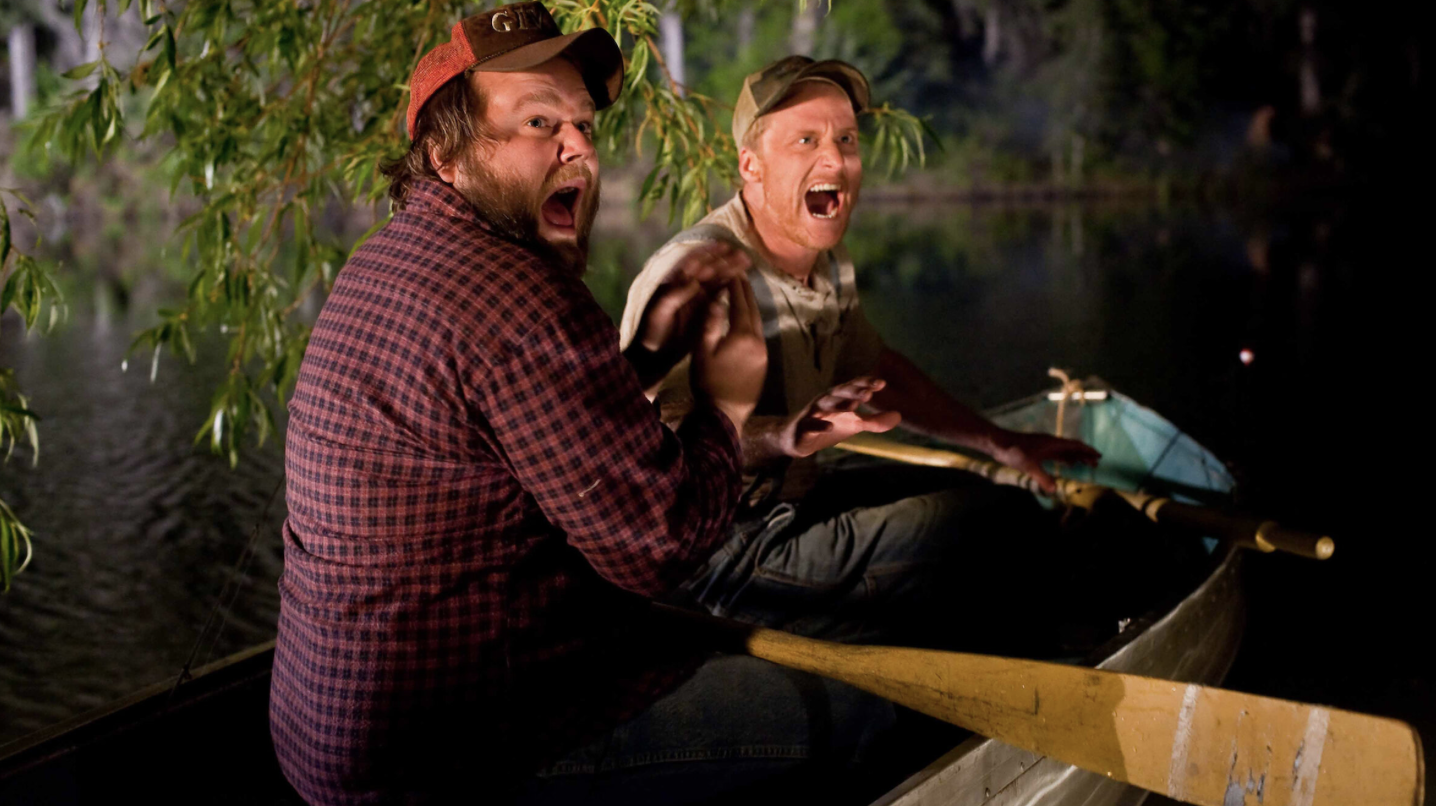
Horror - like all genres - sometimes gets a bit too full of itself, and needs a good roasting. From Young Frankenstein to Scary Movie, we’ve never been short of movies lampooning tropes, themes and characters. In Tucker & Dale vs Evil, what begins as a send-up of Slashers quickly evolves into a clever reversal of clichés, replacing malice with miscommunication and gore with slapstick. It’s smart and subversive, with far more heart than you’d think - and a lot more brains than many of the genre films it skewers. Today’s contributor Mark Killen revs up his chainsaw…
Slasher films were big in the 1980s and are often remembered as quintessential classics, such as Friday the 13th and Halloween. A modern twist of slasher but a comedic twist, comes in the form of Tucker and Dale vs Evil.
If blood and gore are on the agenda, this film checks those boxes. Other classic horror film tropes such as scantily clad scenes and rednecks in the woods, this film delivers. But laughing in between these horror classics and seeing a different side of the staple bloodbath, this film is different than others. The story is told from the perspective of two hillbillies in West Virginia, who are going to their newly purchased property in the woods. The building has seen better days with parts of the house looking suspiciously similar to those of serial killers or horror movie villains.
At the same time, a group of college students are out trying to enjoy the woods on a camping trip and looking to party as they do in these situations. Their paths cross and the ensuing misunderstandings that exponentially get worse result in horror, humour, and a very unique take on the slasher genre.
Dale Dobson (Tyler Labine) and Tucker McGee (Alan Tudyk) head the cast of this film that premiered at the Sundance Film Festival and won the audience award at SXSW. This film is Eli Craig’s first feature film, who both wrote and directed it.
For those who want to mix their gore and comedy or just want something different than the usual horror movie that has been seen every Halloween, this film will deliver.
Tucker & Dale vs Evil is available on Prime.
Want more Horror send-ups? Watch Bodies, Bodies, Bodies (2022), Behind the Mask: The Rise of Leslie Vernon (2006) and Cabin in the Woods (2011).
Listen to these chats we've had with Bodies, Bodies, Bodies director, Halina Reijn and Tucker & Dale vs Evil star, Travis Nelson.
October 28 - Cat People (1942)
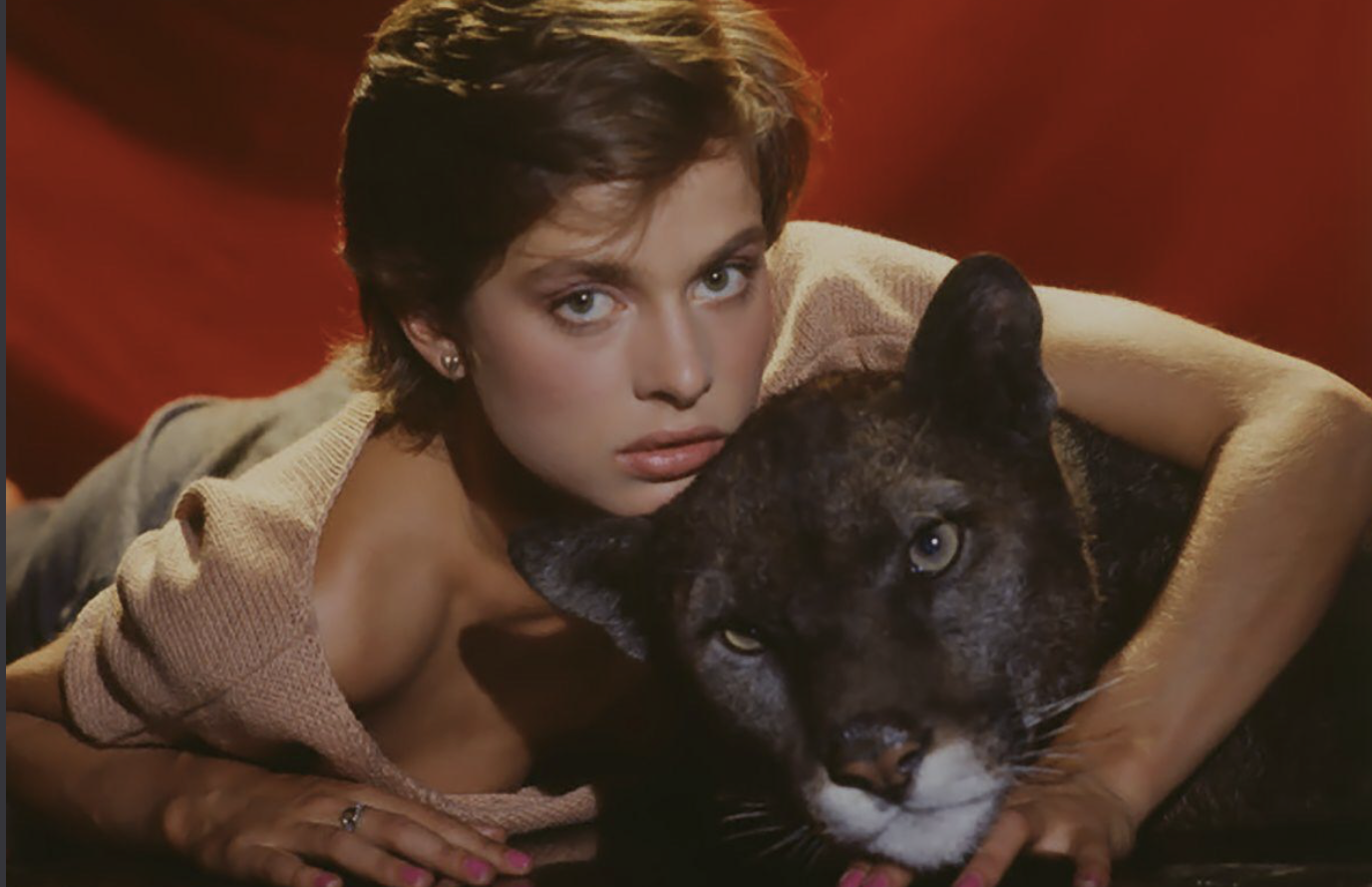
Moving from 80s kitsch to 80s chic, this one has more slick, arty style than a Twin Peaks costume party. Cat People retools the 1942 original into a hallucinatory psychosexual thriller; a feverish blend of erotic tension, animal magnetism (sorry) and gruesome violence. Bathing scenes in sultry neon, exploring repression and desire, imagining bodily metamorphosis as a physical metaphor for forbidden appetites and the cultural panic around female sexuality; it’s not so much a movie as it is a movement. Today’s contributor Oscar Meagher lobbies hard for Cat People…
Paul Schrader’s remake of Jacques Tourneur’s Cat People requires the use of exaggerated finger quotation. It’s less an updated version of that film and more a total re-interpretation of the basic idea. Surprisingly, despite having a prolific director and notable on-screen talent, Cat People's reputation appears to be virtually non-existent.
The film’s continued lack of appreciation unfortunately places it in the shadow similar works like John Carpenter’s The Thing or David Cronenberg’s The Fly. Schrader’s Cat People is probably not as thrilling nor is it as drastic an improvement over its original. The film’s slower journey towards reappraisal is more likely a result of its admittedly uncomfortable investigation of human and animal sexualities.
It’s not a horror movie in the traditional sense yet it's still concerned with the same idea as its contemporaries. Its terror is based in the unwanted alteration of one’s own physical self. This is not a case of the body being changed by an external threat nor is it an unreversible deterioration of the human form. This metamorphosis is a result of human compulsion and thus avoidable had the compulsion not been so overwhelming. If The Fly is about the body giving up, Cat People is about the body giving in.
The film follows Irena (Nastassja Kinski), a young virginal woman plagued by the potentially dangerous outcomes of indulging in her sexual desires. It turns out that Irena is part of an incestuous race that will revert into large black panthers if engaging sexually with anyone outside of their own bloodline. Her situation is twisted further by the two men in life, her lecherous brother Paul (Malcolm MacDowell) and her Zoo curator boyfriend (John Heard).
If you’re still on board, please know that Cat People isn’t what you may think it is. It’s a haunting film and unmistakably Paul Schrader - his continuing examination of isolated and repressed characters taken to a mystical extreme. Even more crucial to the film’s success is Nastassja Kinski as Irena. She’s effortlessly seductive and compelling while bringing a great sense of pathos her role. The character’s journey is of an abandonment of her created self in favour of her true self. If that is the case, does the film’s ending imply that there is no way to escape our cage? Perhaps giving oneself entirely over to love is its own form of imprisonment?
If you know anything about Cat People, it might be the David Bowie song popularised by Quentin Tarantino's Inglorious Basterds. The film’s score was composed by Giorgio Moroder, who worked with the director two years prior on American Gigolo. If you’ve never heard any of Moroder’s work, I’d recommend Irena’s Theme.
Cat People is available to watch on Prime.
For more atmospheric, neon-tinged horror, check out The Hunger (1983), Near Dark (1987) and Byzantium (2012).
October 29 - The Ugly Stepsister (2025)
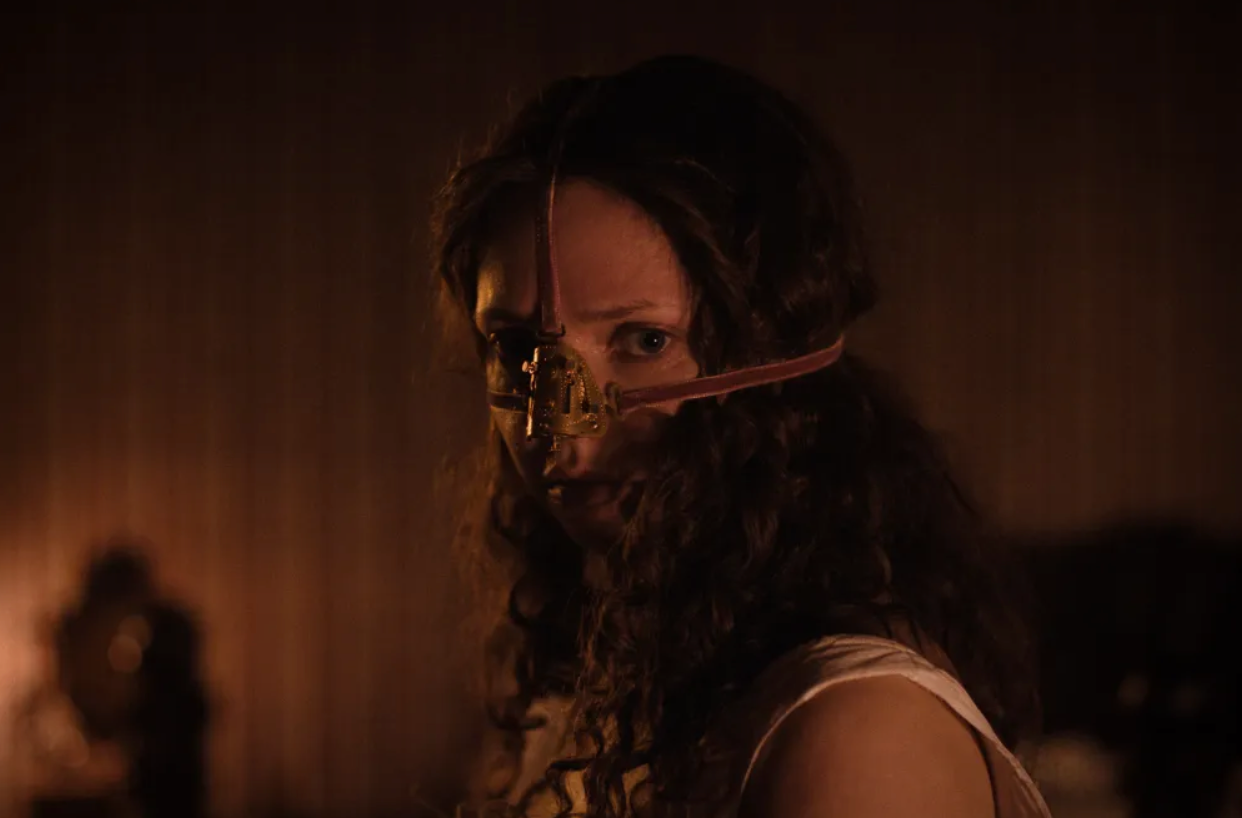
Bibbity bobbity yikes. Another remake - of sorts - today, but one of a very different nature. The Ugly Stepsister begins as a deceptively familiar fairytale but gradually descends into something much harsher; a blacker-than-black Comedy/Body Horror riff on Cinderella that skewers the stark violence of beauty culture. Set in a Disneyesque kingdom where marriageability and appearance are treated like currency, it follows two sisters navigating a world that rewards conformity and punishes deviation. Where the standard princess fairytale traditionally ends with a ballroom and a ring, this version traces the terrifying measures women take to meet an impossible standard, to an insanely grotesque grand finale that will stick with you forever.
The Ugly Stepsister’s tone is a tightrope walk between biting wit and extreme gore. Its humour is sharp and clever, but the laughs are frequently swallowed by images of physical degradation. Trust me, this movie really wants you to squirm. That tension - between the seductive prettiness of its visuals and the disgusting reality beneath - is where the movie is most effective. There’s a formality to its nastiest set pieces - not just played for shocks, they function as social indictment. When the violence becomes excessive, it rarely feels gratuitous. Instead, the excesses serve as allegory for the brutality of beauty standards.
Titular stepsister Lea Myren finds a perfect balance between the humiliation of being sidelined and the terrifying behaviour that desperation can spawn. All vulnerability and brittle rage, Snow White could never. Larger-than-life supporting characters lean into the film’s satirical aims; vanity and cruelty are played with a knowing sheen that amplifies their grotesque core. Gorgeous, elaborate sets filled with familiar Disney Princess motifs - mirrors, dresses, dance recitals - now feel sinister. There is an echo here of other recent works too, like last year’s The Substance, that interrogate feminine ideals through horror’s distortions, but the film approaches its subject with enough mischief and urgency to feel fresh and distinct. It refuses the simplistic idea that beauty is either wholly good or wholly corrupting, something The Substance veered towards being guilty of. Instead, it traces a landscape where beauty functions as protection, a bargaining chip, a weapon. Where the pressure to obtain perfection can corrode bonds between people who should be supporting one another.
The Ugly Stepsister’s best move is to redirect attention away from romantic rescue and toward solidarity. Sisterhood, not princes, is presented as the key to survival and resistance. That pivot reframes the narrative’s traditional reward system, turning fairytale wish fulfilment into a critique of the institutions that have long dictated feminine worth. It’s a brave move in a messy, frequently brilliant sendup. It refuses to offer easy answers; instead, it forces a confrontation with how societies value bodies and how that valuation warps selfhood. For a movie with a lot of shock and splatter, it delivers surprisingly precise social commentary. You’ll experience some of the goriest, most gruesome moments ever put to film. But the real horror lies less in the carnage, and more in a culture that demands sacrifice in the name of acceptance.
The Ugly Stepsister is available to watch on Shudder.
Thirsty for more extreme body horror? Watch Tetsuo: The Iron Man (1989), Tusk (2014) and Society (1989).
October 30 - Bone Tomahawk (2015)
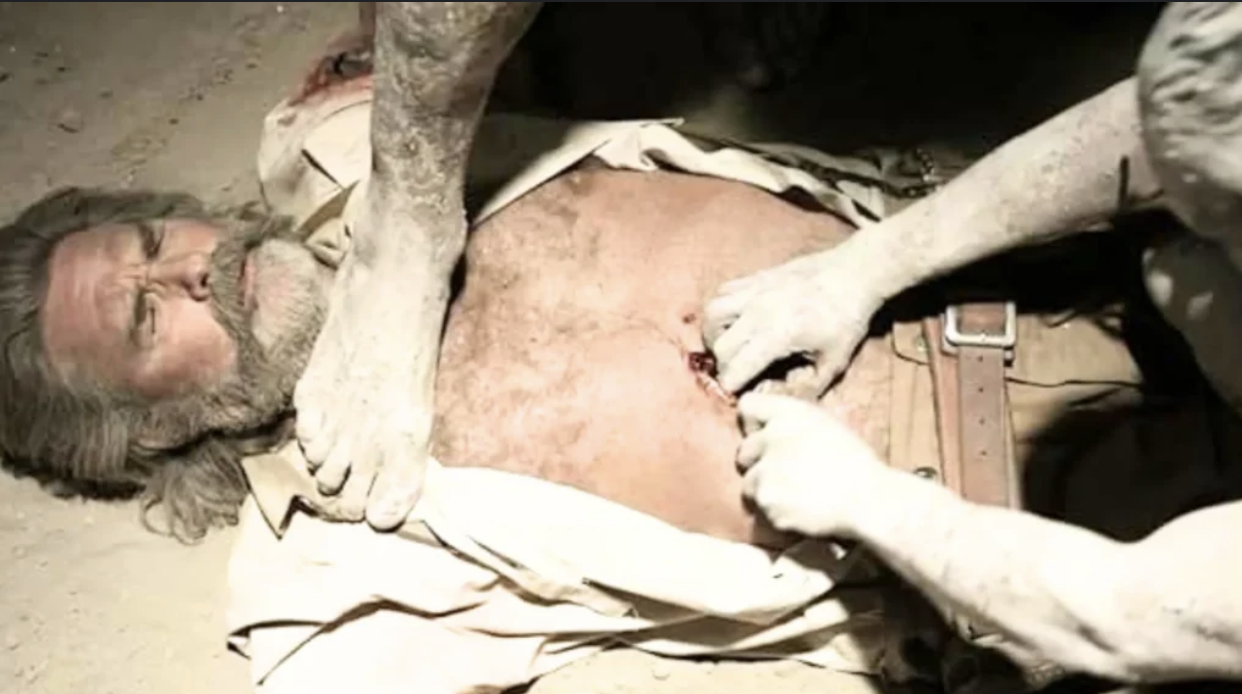
Following on from yesterday’s gruesomely funny entry, I wanted go full dark, no stars for the penultimate movie on this list. It came down to a handful of options, but given that the final choice works as a stealth remake of one of the greatest Horror movies ever made, it seemed fitting to go with it. A tale of a lawman, an academic and a professional hunter setting off to find and kill a monstrous, unseen menace threatening their community, Bone Tomahawk is probably the closest we’ll get to a Jaws remake without creating a collective cinephilic rage that eclipses the sun.
S. Craig Zahler’s directorial debut moseys into town like any other sun-drenched Western, before it takes a sharp, grisly turn off the beaten path. Like Jaws, its story is deceptively simple; a good old-fashioned Western rescue mission. Sheriff Franklin Hunt (Kurt Russell) and a small rescue party venture forth to save townspeople kidnapped by a cannibalistic cave-dwelling tribe, and ensure it never happens again. What begins as a straightforward journey by the grizzled lawman - along with an injured doctor desperate to save his wife, and a cold-blooded gunslinger - slowly transforms into a nightmare; climaxing with startling brutality that leaves a permanent scorch mark.
The first hour unfolds with an unhurried confidence. It luxuriates in its own deliberate pace; allowing long, meandering scenes to define the men on this desperate quest. Zahler understands that great Horror is often a slow burn, and that great Westerns aren't built on shootouts alone but on the rhythms of conversation and the bonds forged between men facing impossible odds. The dialogue crackles with wit and unexpected turns, never settling for the expected cliché when a more interesting observation is available. Russell anchors the film with quiet authority, playing Hunt as a man who understands the violence of the frontier but approaches it with weary professionalism rather than romanticised heroism. Patrick Wilson's Arthur O'Dwyer, hobbled by a broken leg but driven by love, brings genuine vulnerability to what could have been a stock character. Matthew Fox's deadly, capable John Brooder delivers casual zingers between moments of brutal competence, and Richard Jenkins steals scenes as the Sheriff’s elderly backup deputy Chicory, whose rambling anecdotes and guileless charm provide levity without undermining the dread. The ensemble works because Zahler gives the men a distinct, decidedly Shakespearian script to work with, allowing the long stretches of travel to build their character rather than test our patience.
Then comes that scene. What seems like a character piece suddenly grows teeth and starts biting, with savage disregard for our comfort. The sharp, sudden violence doesn't play by the sanitised rules of traditional gunslinging fare. Like Jaws, Bone Tomahawk commits fully to the horror elements quietly threaded through the narrative, delivering its own “you’re gonna need a bigger boat” moment that will genuinely disturb even seasoned genre enthusiasts. The brutality confirms that this rescue mission has led our heroes somewhere beyond the boundaries of civilisation, into new territory where familiar Western tropes can’t protect them. In essence - again like Jaws’ trio of hunters - when they realise they’re the ones being hunted, they’re royally screwed.
Bone Tomahawk refuses to apologise for its hybrid nature. The Western elements ground the story in recognisable archetypes and moral frameworks, while the horror components subvert those expectations with uncompromising ferocity. Zahler shoots the vast landscapes with appropriately epic scope, making the isolation and vulnerability of the rescue party palpable. You could almost say it feels like they’re venture deep into an ocean of uncertainty…
You have been warned - Bone Tomahawk does not flinch. It’s highly recommended, but not for the weak of heart. It’s a patient, superbly acted character piece with the black heart of a shockingly gruesome horror film, and Kurt Russell in the form of his life. For those willing to follow its slow burn and face what’s at the end, it offers a smart, often harrowing collision of genres that will never be forgotten. Trust me.
Bone Tomahawk is available to rent or buy from Prime.
Rootin’ for more Western-tinged Horror? Watch Sinners (2025), Ravenous (1999) and The Wind (2018).
Tomorrow, we’re doing things a little differently. To mark the final day of our list, we asked our contributors to name the scariest ever movie. Popular, unpopular, sleeper hit or billion-dollar blockbuster, it doesn’t matter – we’re talking a movie that scares the absolute living bejesus out of them. Check back tomorrow when we crown the winner!
October 31…
“You still don't understand what you're dealing with, do you? The perfect organism. Its structural perfection is matched only by its hostility…I can't lie to you about your chances. But you have my sympathies.” - Ash, Alien (1979)
To mark the final day of our list, we asked our contributors to name the movie that scares the absolute living bejesus out of them. The most mentioned? Unsurprisingly, it’s Ridley Scott’s claustrophobic nightmare.
Alien (1978)
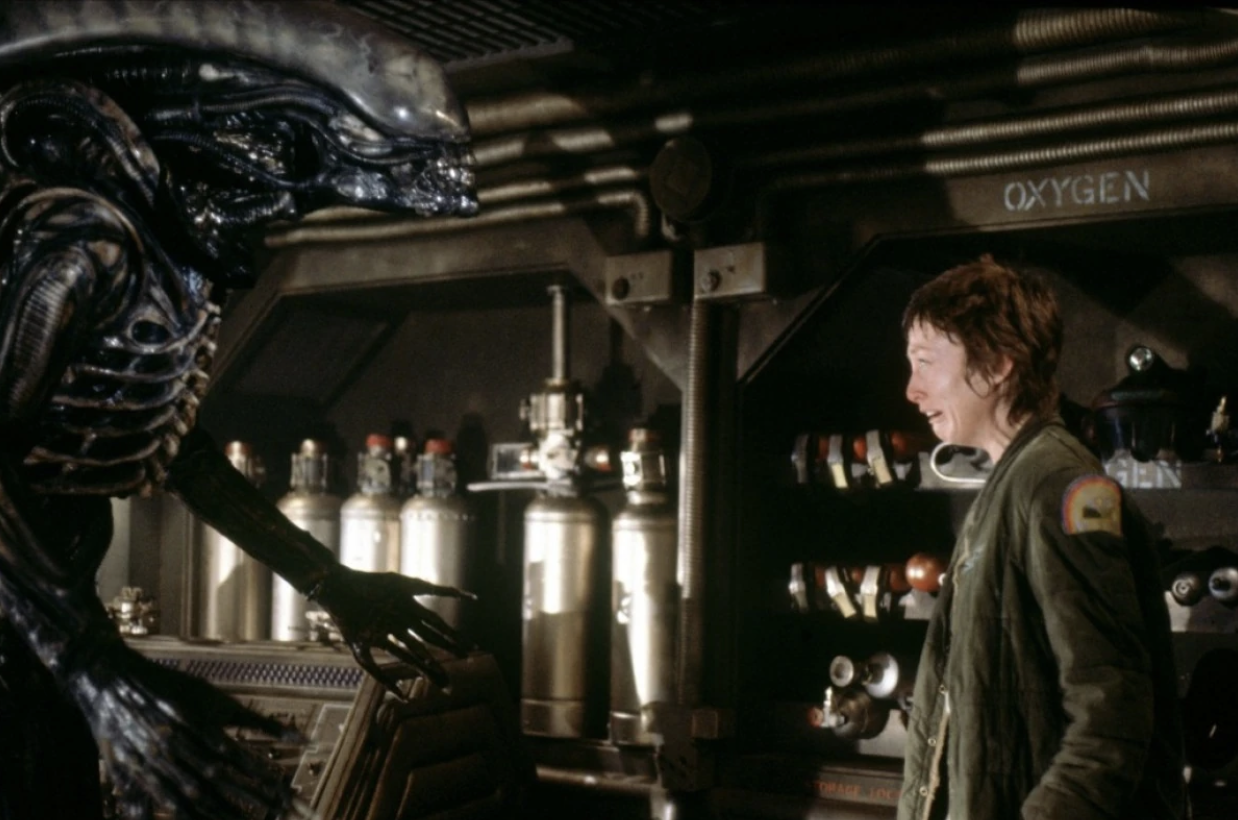
Alien is the kind of movie that sneaks into your head, builds a nest and hisses at you from the shadows for days. This is a movie that doesn’t just aim to terrify - it saturates you in dread, tension and existential horror, all while looking like it was plucked from the fever dream of a cosmic surrealist. The scariest part is, it’s not just the alien that’s out to get you - it’s the cold, uncaring vastness of space itself, and an equally terrifying manifestation of capitalism that doesn’t care if you live, die, or are fated to something worse than death.
If a movie can be both a slow-burning psychological siege and a sprinting nightmare, Alien is that rare creature. The story is no-nonsense and economical, which is precisely why it works so well. A commercial spaceship, the Nostromo, intercepts a mysterious signal from a barren planet. Following protocol the crew investigates, discovering a derelict alien ship and, within it, a clutch of eggs. When one of the eggs hatches, the nightmare begins. What follows is a game of survival against the ‘Xenomorph’; a creature so perfectly designed to kill, it feels less like a monster and more like nature’s cruellest joke. The crew, eventually led by Sigourney Weaver’s now-legendary warrant officer Ripley, must fight for their lives aboard a ship slowly transforming into a claustrophobic labyrinth of death.
It’s not just that the alien monster is grotesque or that the kills are brutal; it’s the way the movie conjures dread from the unknown and the unseen, exploiting our deepest fears of claustrophobia and vulnerability. The terror is not loud or flashy - it’s suffocating, creeping. Alien has a masterful command of atmosphere. The Nostromo feels less like a spaceship and more like a massive tomb, all long corridors and choking shadows. The production design is industrial, grimy and claustrophobic, a far cry from the sleek, shiny future often depicted in sci-fi of the era. But Alien isn’t just a technical marvel; it’s also one of the most thematically rich horror movies ever made. Beneath the surface-level terror lies a minefield of existential dread and social commentary. The alien isn’t just a monster - it’s a manifestation of humanity’s deepest fears: the unknown, the uncontrollable, the predator lurking just beyond the firelight. It’s no coincidence that its life cycle - gestation, birth and growth - mirrors human reproduction in ways that are deeply unsettling. The infamous ‘Chestburster’ scene, where a tiny alien violently erupts from a crew member’s body, isn’t just shocking - it’s a grotesque inversion of creation itself, an image so visceral it’s burned into cinematic history.
Then there’s the way the movie explores corporate greed. The crew of the Nostromo isn’t just battling an alien; they’re battling the indifference of their own employer. The company that owns the ship, represented onboard by the chilling android Ash and HAL-esque computer Mother, views the alien not as a threat but as an asset, the crew as expendable once its onboard. The Final Boss isn’t the one with claws and acid for blood, it’s the one with a suit, tie, synergy and leverage. This is a theme that continues to be food for thought throughout the franchise, and was recently explored and expanded excellently in the Disney+ series Alien: Earth.
Alien is, of course, anchored by Weaver’s Ripley; clearing the way for female protagonists in genre movies with a flamethrower. Ripley isn’t a damsel in distress but a pragmatic, tough survivor whose intelligence and grit outshine her crewmates’ fake bravado. Watching her ascend from one of many to the sole survivor is a study in quiet resilience, a performance that balances fear with fierce determination. Weaver’s portrayal avoids cliché, giving Ripley a grounded humanity that makes her all the more compelling - she’s flawed and terrified, but she’s also highly capable, unafraid to tell her male crewmates to shut up when they’re being argumentative and emotional. The movie’s remaining cast to a person are stellar, an ensemble for the ages. They feel lived-in; their conversations in earlier scenes organic, their rallying in later scenes weighty and earned. Rather than being fodder, every death is a gut punch.
The pacing, as in all good Horror, is deliberate - it doesn’t rush to the monster’s reveal but instead lets tension build through silence and suggestion. The alien’s presence is often implied rather than shown, a tactic that magnifies horror through imagination (see also: Jaws). When the creature finally storms the screen, it’s a terrifying payoff that feels earned, shocking, and viscerally real.
For a movie released in 1979, Alien still feels ahead of its time. Its influence on not just sci-fi and horror, but cinema as a whole is immeasurable. It’s the blueprint for a thousand imitations, few of which have managed to replicate its alchemy of terror, artistry and intellect. It’s no coincidence that the first sequel’s director James Cameron - seeing that to clone the original would be folly - chose more all-out action and less slow-burning terror, in the same sandpit, to great success.
Alien’s ability to remain terrifying over four decades later is a testament to Scott’s vision and the production team’s dedication to mood, character and design. It’s not just the alien that scares us; it’s the oppressive atmosphere, the slow unravelling of trust among the crew, and the ever-present danger lurking in the cold void of space. Watching it today, it’s easy to see why it still holds its throne. This isn’t a movie - it’s an experience; terror distilled to its essence - primal, intimate and inescapable. Alien invites you to confront your nightmares head-on, wrapped in a sleek sci-fi package that still feels fresh and urgent. It’s a masterclass in suspense, relentless with a sharp social edge, and perhaps the purest distillation of fear ever captured on film. If Horror has a form, it’s the Xenomorph - cold, brutal, unstoppable…and utterly alien.
Alien is available to watch on Disney Plus.
Honourable mentions that almost made the list: The Gate (1987), Watcher in the Woods (1980), The Witches (1990), Demon Wind (1990), Grave Encounters (2011), Orca (1977), I Saw the TV Glow (2024), Raw (2016), WNUF Halloween Special (2013), V/H/S (2012), MadS (2024), Wer (2013), The Invitation (2015), The Blackcoat’s Daughter (2015), As Above So Below (2014)


About Conor Bryce
Conor is a designer, author and amateur filmmaker with a lifelong love of cinema. Born in County Down and a Limerick blow-in for nigh-on fifteen years, when he’s not running after his daughter he’s running along the Shannon with a movie podcast in his ears. He’ll happily talk your ear off about why a Krull remake would rock or how the Last of the Mohicans soundtrack changed his life, but you’ll have to catch him first.


